Students from UBC’s Department of French, Hispanic and Italian Studies (FHIS) recreated and modernized famous paintings from the Francophone, Hispanic, Italian, and Lusophone world as part of an FHIS Instagram Contest hosted by the Cultural Club. Take a look at the impressive submissions!
Submitted by: Isabelle M. and Alex D.
Source: Reprodart.com
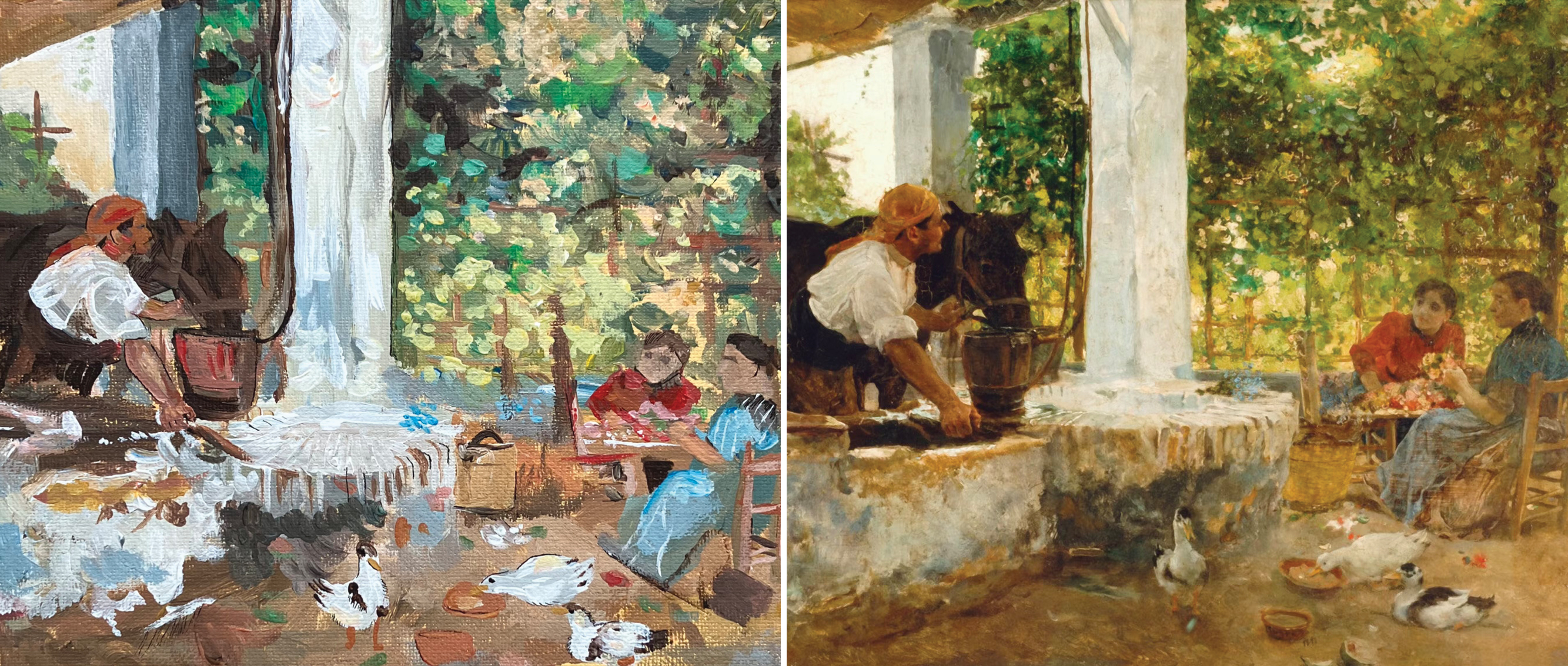

Submitted by: Jacqueline C.
“Joaquín Sorolla excelled in the painting of portraits, landscapes and monumental works of social and historical themes. His most typical works are characterized by a dexterous representation of the people and landscape under the bright sunlight of Spain and sunlit water.”
Source: Google Arts & Culture
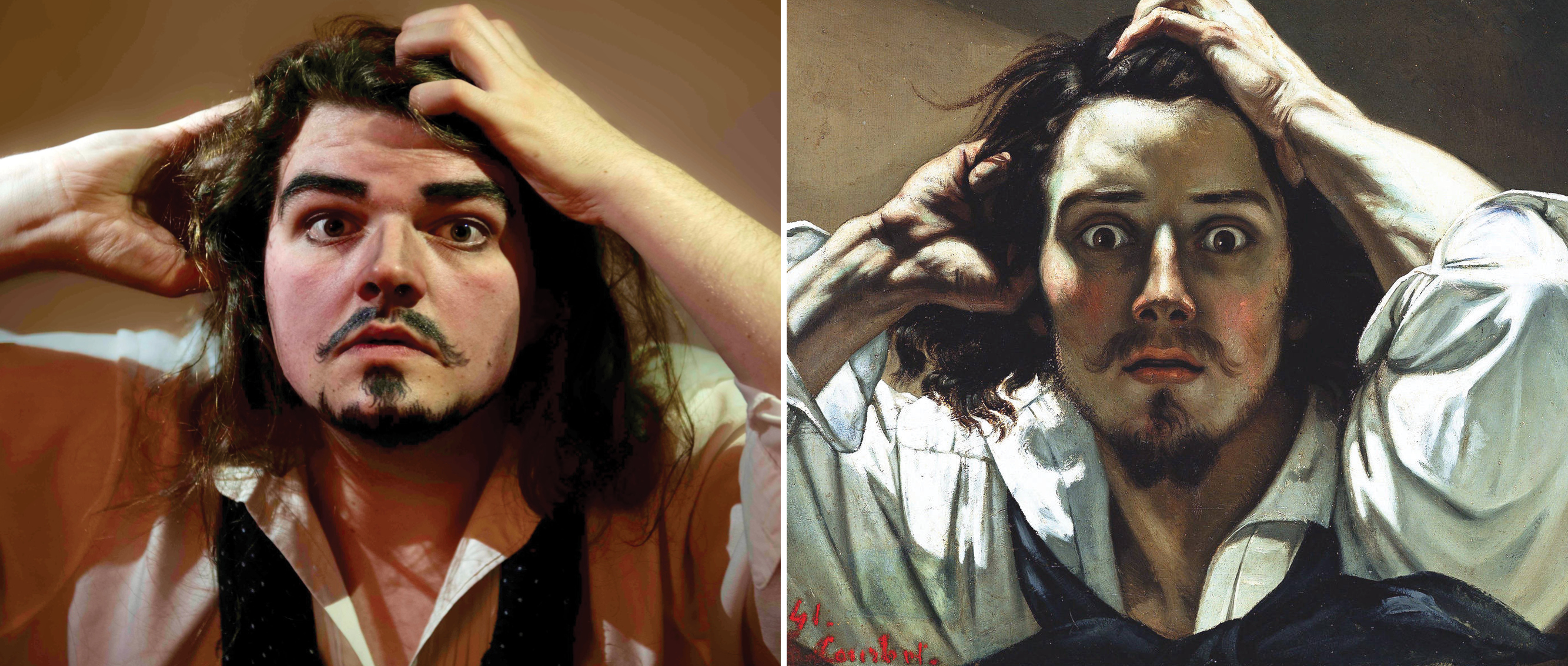

Submitted by: Kirsten M.
“The famously overwrought self-portrait The Desperate Man by the French Realist Gustave Courbet remained in the artist’s studio until his death … Courbet here appears the quintessential Romantic artist—a tortured genius struggling for recognition and a bite to eat … After all, in 1843, when Courbet undertook this anxious self-portrait, he was a young man without a manifesto, still laboring to build his reputation.”
Source: Artsy.net
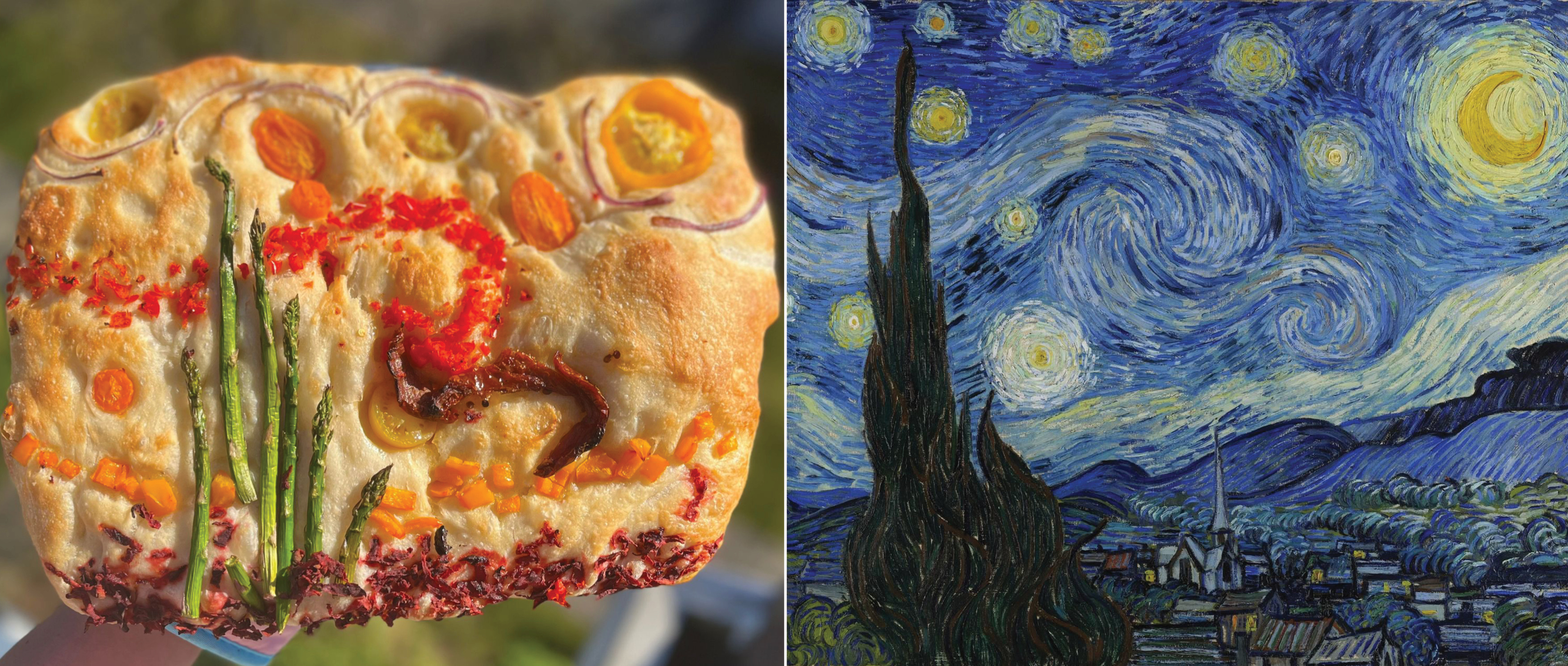

Submitted by: Juana C.
“Vincent van Gogh painted The Starry Night in 1889 while he was staying in Saint-Paul asylum in Saint-Rémy, France, where he lived for a year following a breakdown and the mutilation of his left ear. Painted with oil on canvas, the artist attempted to capture the view from the window in his room.”
Source: Artandobject.com
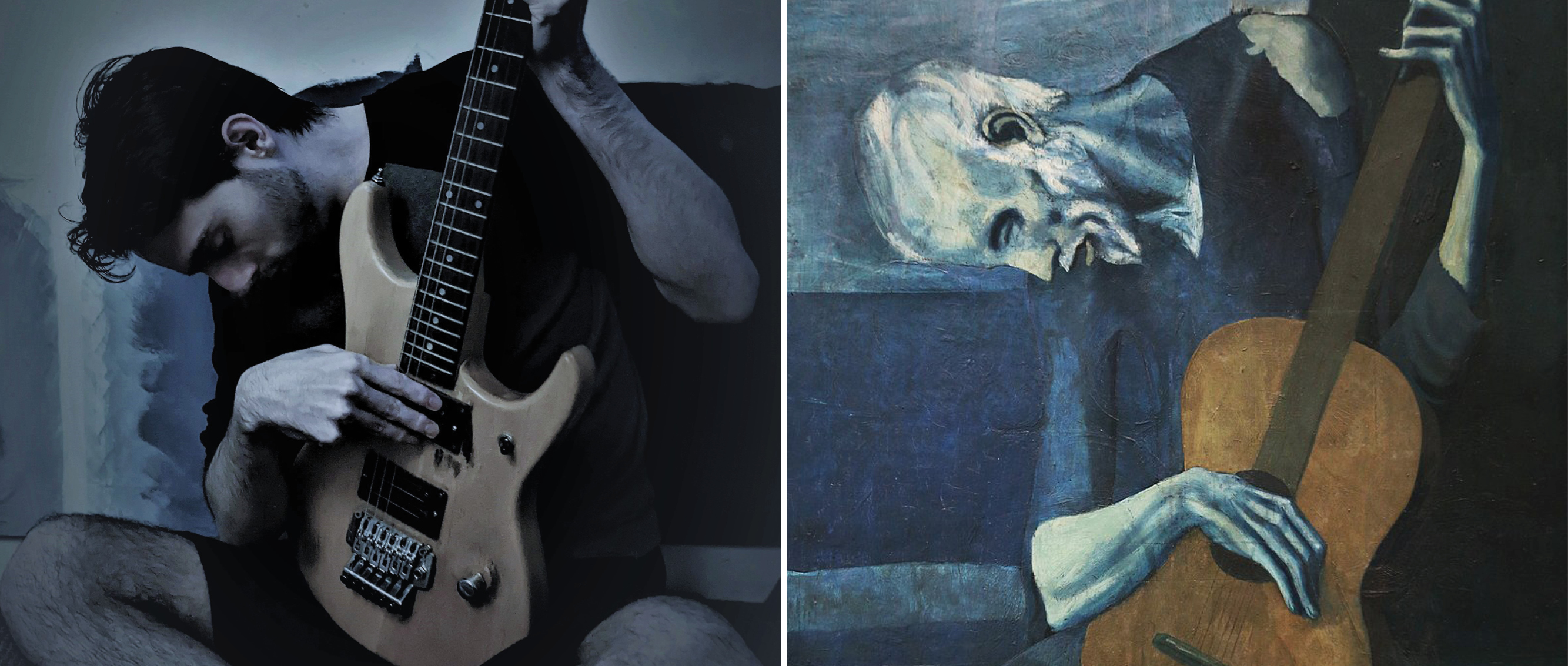

Submitted by: Steven M.
“The guitarist, although muscular, shows little sign of life and appears to be close to death, implying little comfort in the world and accentuating the misery of his situation. The guitar comes to represent the guitarist's world and only hope for survival.”
Source: Wikipedia.org
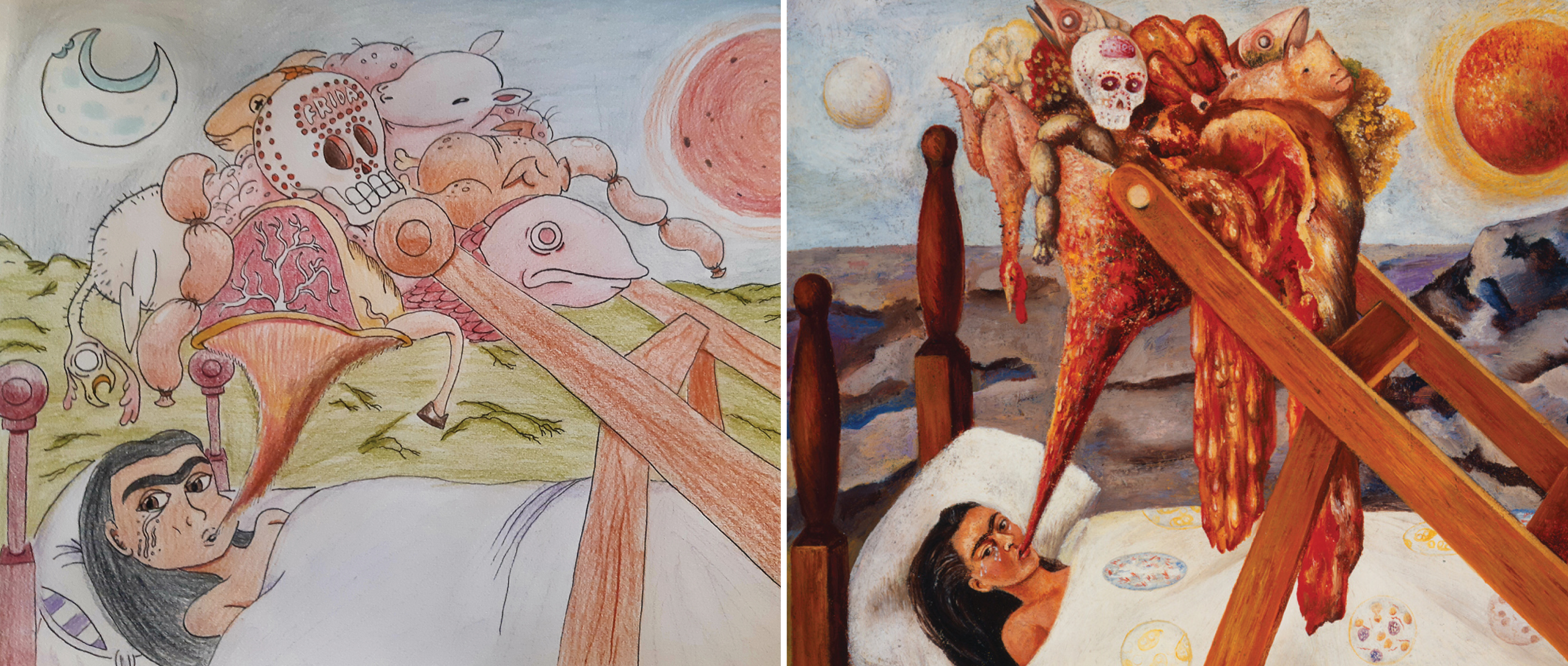

“The piece was painted in 1945 after Frida Kahlo’s last illness, when she became emaciated and malnourished. Kahlo was prescribed what she considered a force-feeding diet of fattening pureed foods, fed directly every two hours. In this painting, all hope and tolerance seem to have vanished. Her arms are pinned under the covers, leaving her powerless to control her destiny.”
Source: Kahlo.org
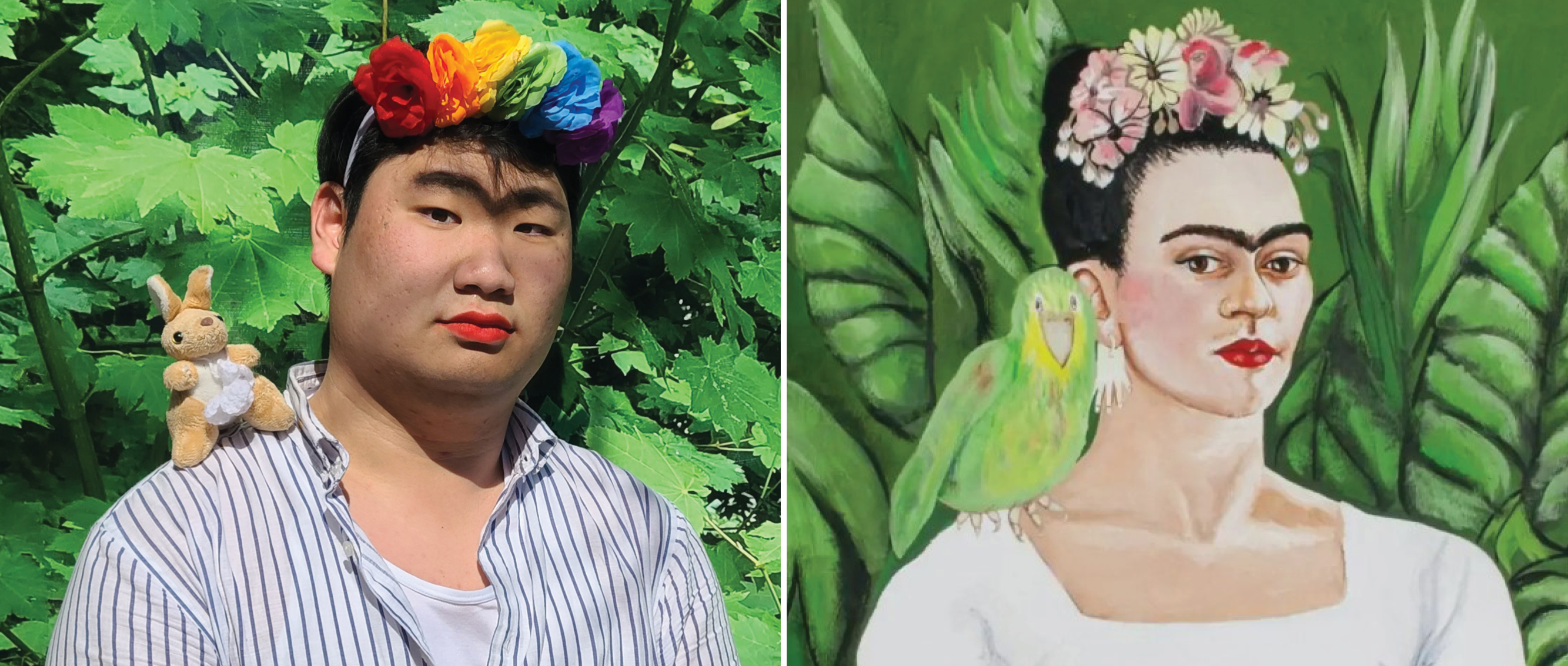

Submitted by: Keonhwi K.
"Frido Kahlo’s paintings, many of which are self-portraits, reflect this suffering and an introspective look into her life.”
Source: Spanishmama.com
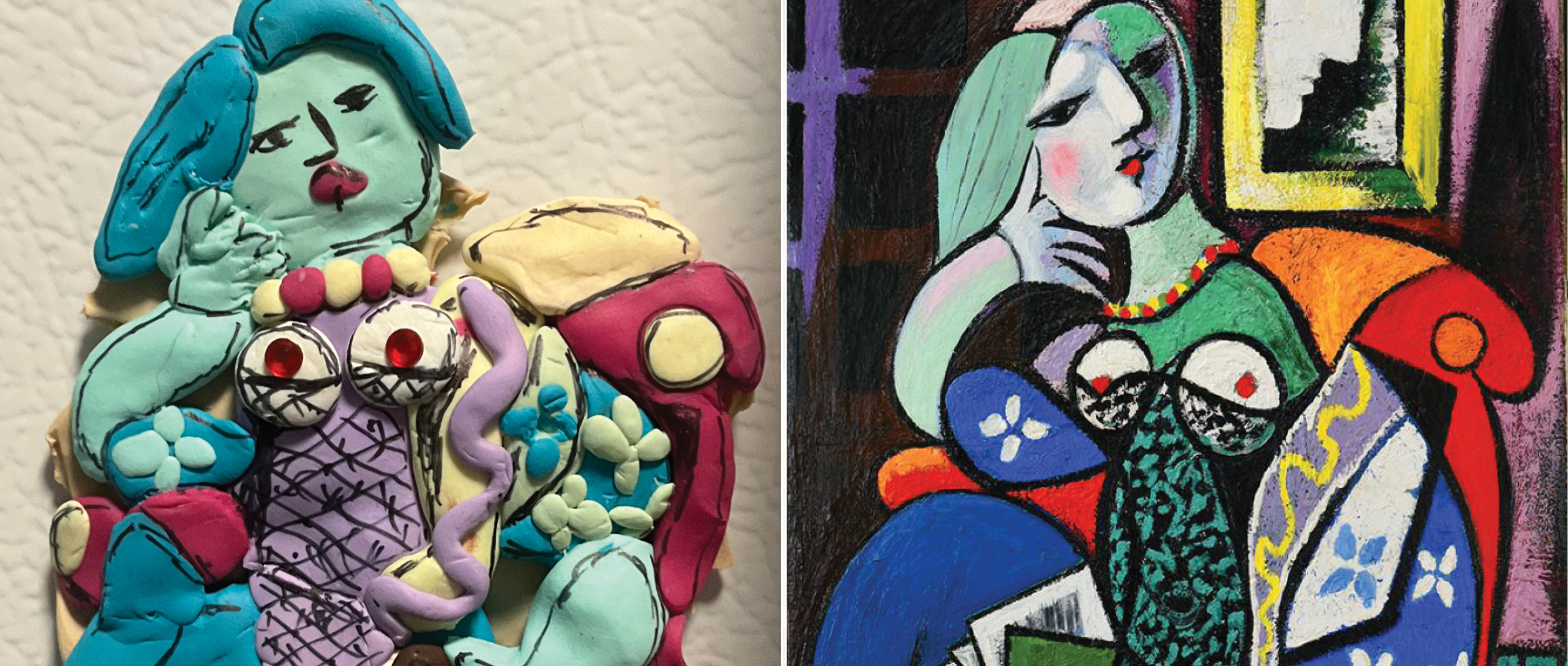

Submitted by: Ellen M.
“Among Picasso’s most celebrated likenesses of his lover Marie-Thérèse Walter, Woman with a Book balances sensuality and restraint, enclosing exuberant, thickly applied color in a network of sinuous black lines. The composition pays homage to the Neoclassical master of line, Jean-Auguste-Dominique Ingres, whose work Picasso had admired since his youth, and whose Portrait of Madame Moitessier the Spanish painter had first encountered in 1921.”
Source: Nortonsimon.org


Submitted by: Sasha P.
“This well-known portrait of Alexandrine-Emilie Brongniart was made for her father, Alexandre-Theodore Brogniart, a friend of Elisabeth’s at the time. In 1789, Elisabeth took refuge in his Paris house during the turbulent autumn. Elisabeth was born and raised in Paris, living with her father Louis who was also a painter. In 1783, she joined the French Academy and was known for her beautiful portraits of Mademoiselle Brongniart and Queen Marie Antoiette, later on.”
Source: Nationalgallery.org
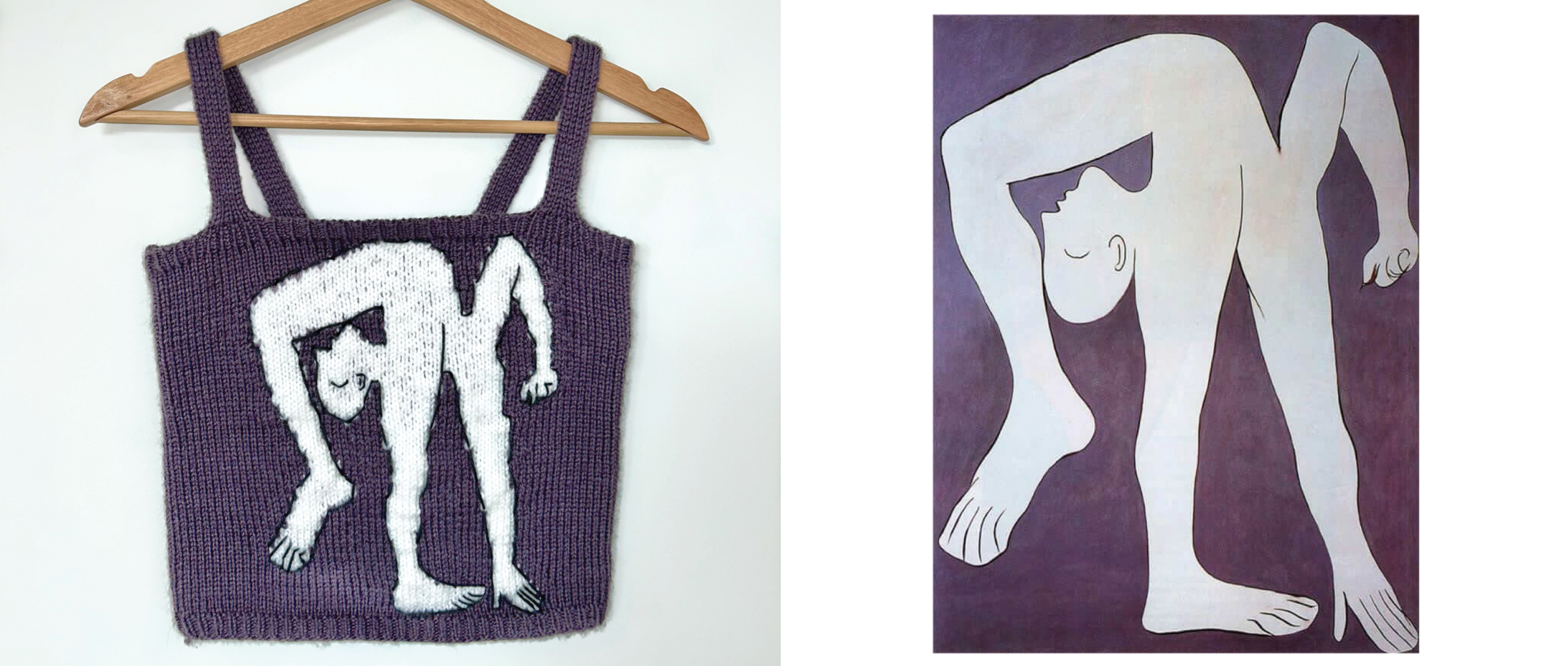

Submitted by: Sophie P.
“In this painting, The Acrobat, Picasso depicted the human figure with the cube of the frame despite the apparent freedom of movement … This painting is a good proof of the paradox of movement and rigidity.”
Source: PabloPicasso.org
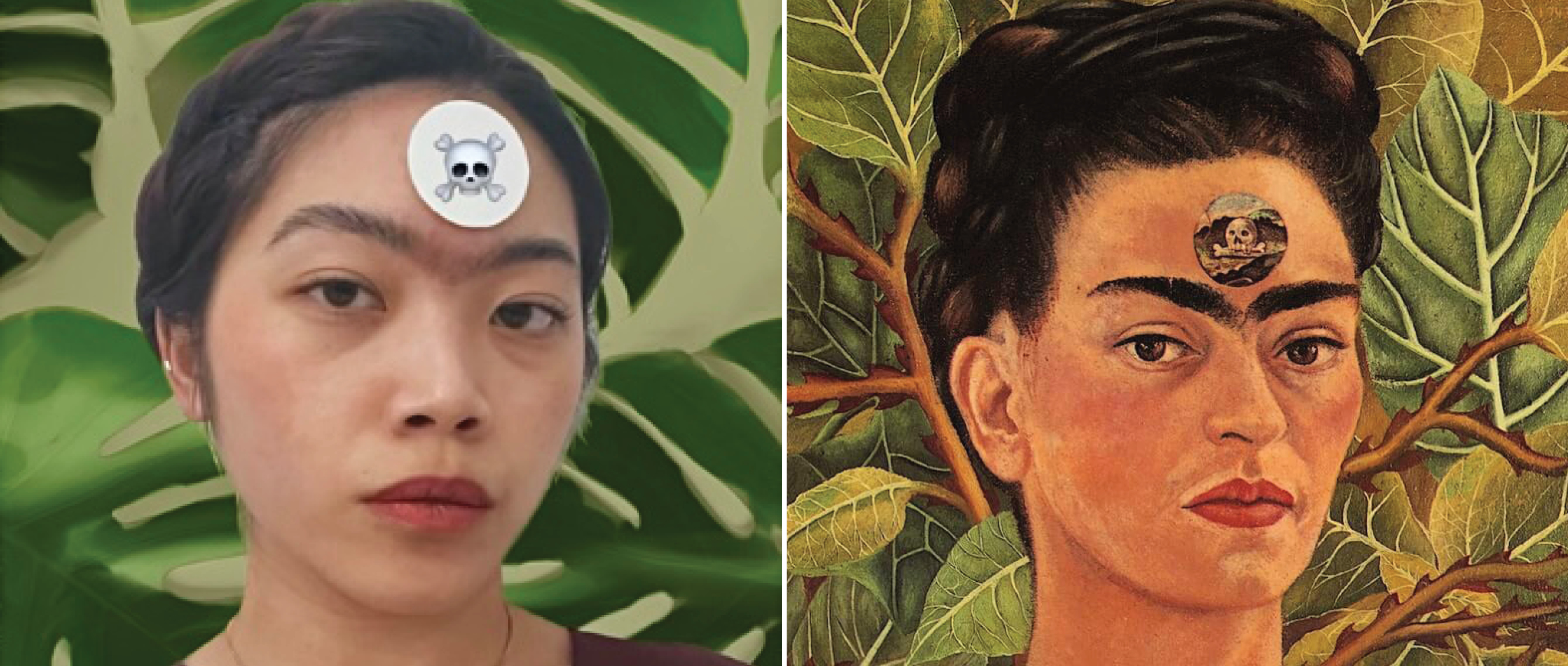

“During the later years of Frida's life, she was tortured by numerous illness and complications. This self-portrait was painted in 1943 and Frida's health was deteriorated during that period and she had to be bedridden most of the time. Due to her poor health condition, death is an inevitable thought which lingering over her mind. In this painting, death is symbolized as a skull and crossbones which shows up in her forehead. In ancient Mexican culture, death also means rebirth and life. In this portrait, she put herself against a background with lavish green leaves, which is a symbol of life. It seems Frida understood that death is a path to another form of life.”
Source: FridaKahlo.org
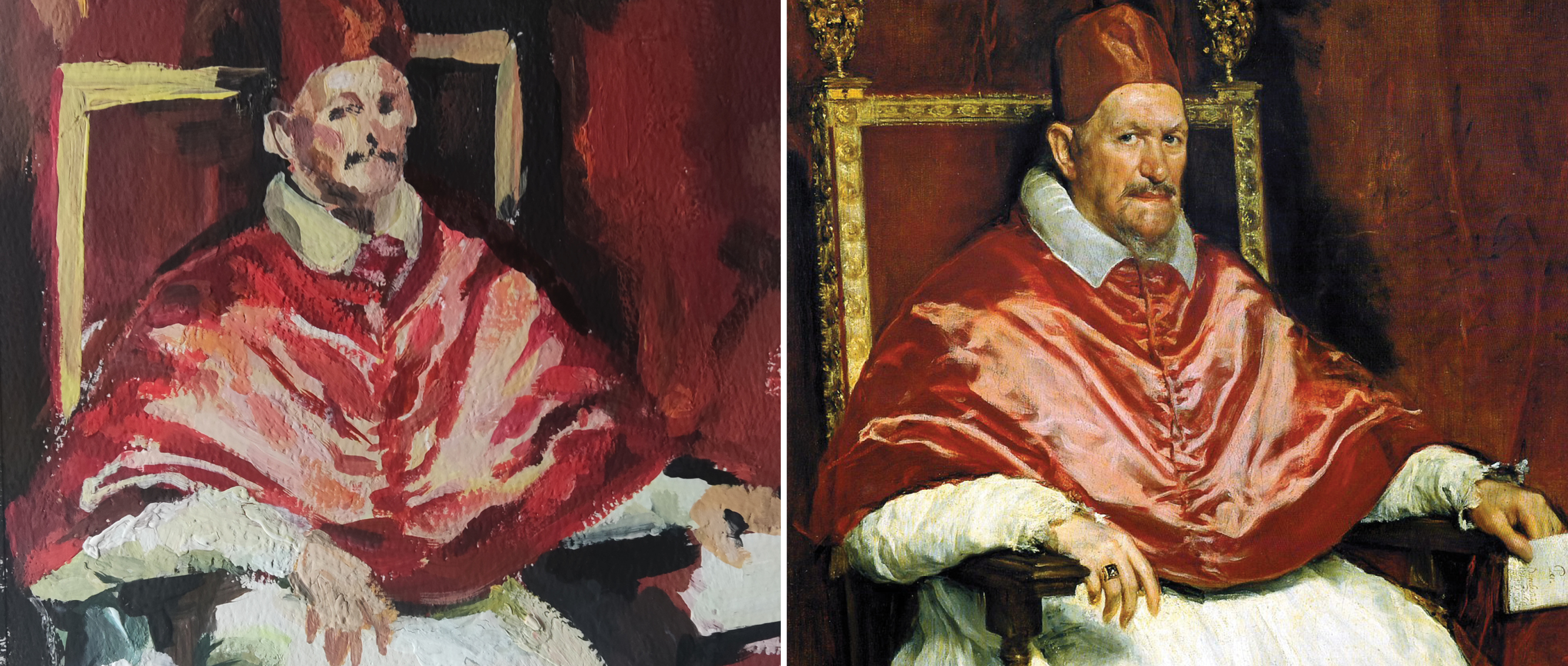

Submitted by: Sophia Y.
“Velázquez's Portrait of Pope Innocent X is a fascinating and profound revelation of the personality and psychology of one of the bitterest Popes ever to haunt the Vatican.”
Source: Artble.com
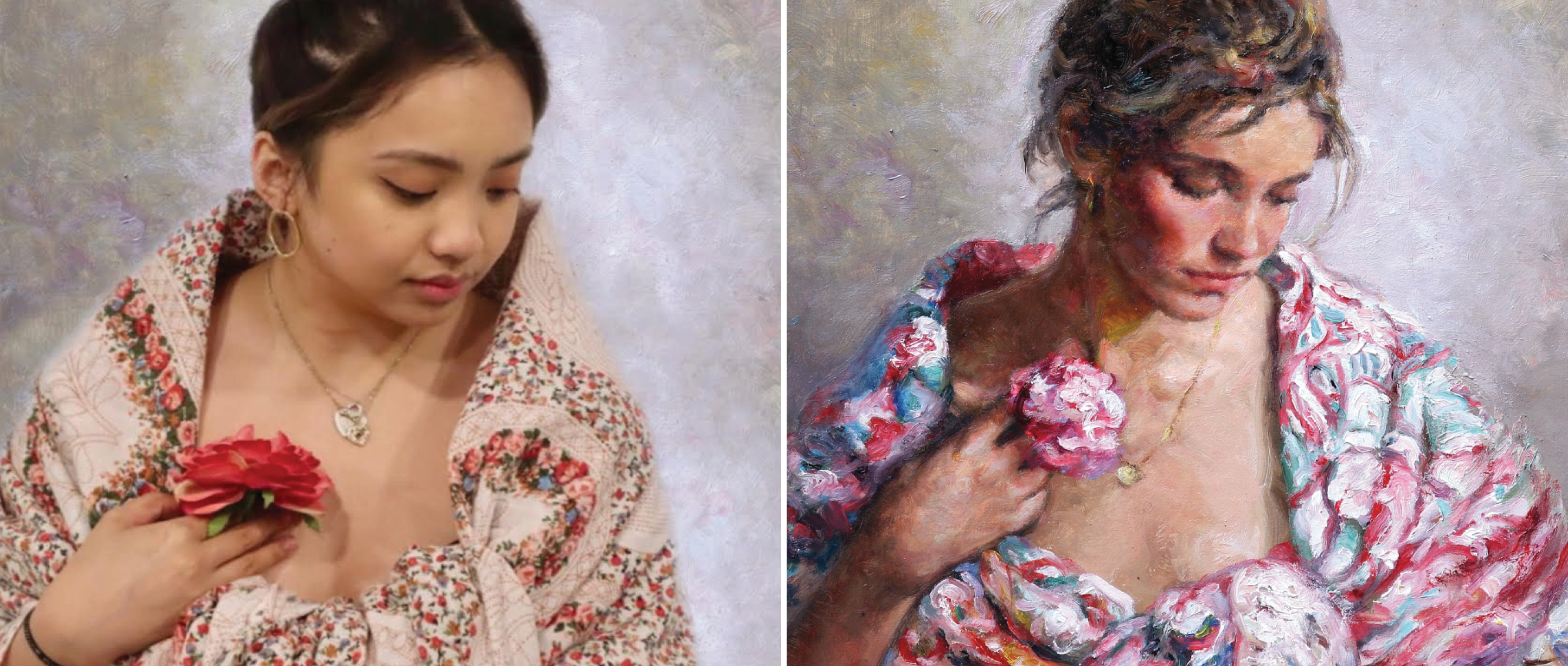

Submitted by: Marinelle Ann S.
"Pensativa (English translation: Pensive/Thoughtful) is an oil painting that was made in 2020 and displays Royo's skills and knowledge in art. This painting was one of the last paintings in his Equus collection. The painting shows a woman who is deep in thought, capturing the beauty of reflection, magical energy, and harmony that women hold. The light and articles in the painting (flowers, clothing) are a portrayal of the natural landscape that Royo is always surrounded by in Valencia (i.e the amount of sunlight, the vibrancy of flowers and fruits, and nature itself). Royo's vision in his art is to ‘display the energy of feminine, the contraction of and power of gesture’.”
Source: Cutterandcutter.com


Submitted by: Katie M.
This is based off of Fernando Botero’s re-interpretation of Raphael’s original Portrait of Pope Leo X (1518, Italy). “The irony and caricature simplicity are often part of Botero’s artistic manner, by which he gives a critical comment on the society he lives in.”
Source: Wikiart.org
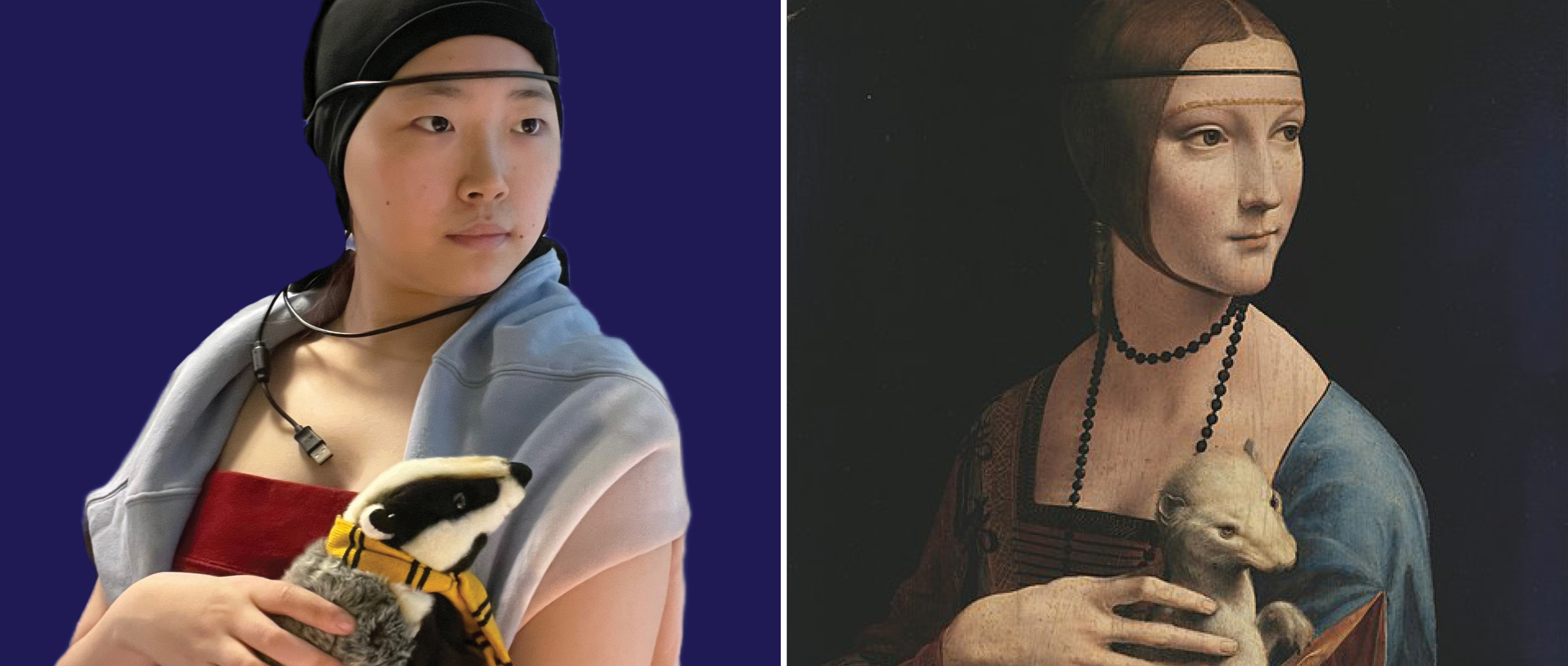

Submitted by: Biying L.
"The painting’s subject is Cecilia Gallerani, a mistress of Ludovico Sforza, Duke of Milan; Leonardo was painter to the Sforza court in Milan at the time of its execution. It is the second of only four surviving portraits of women painted by Leonardo.”
Source: Wikipedia.org


“The Last Supper is Leonardo's visual interpretation of an event chronicled in all four of the Gospels. The evening before Christ was betrayed by one of his disciples, he gathered them together to eat, tell them he knew what was coming and wash their feet (a gesture symbolizing that all were equal under the eyes of the Lord).”
Source: Leonardodavinci.net
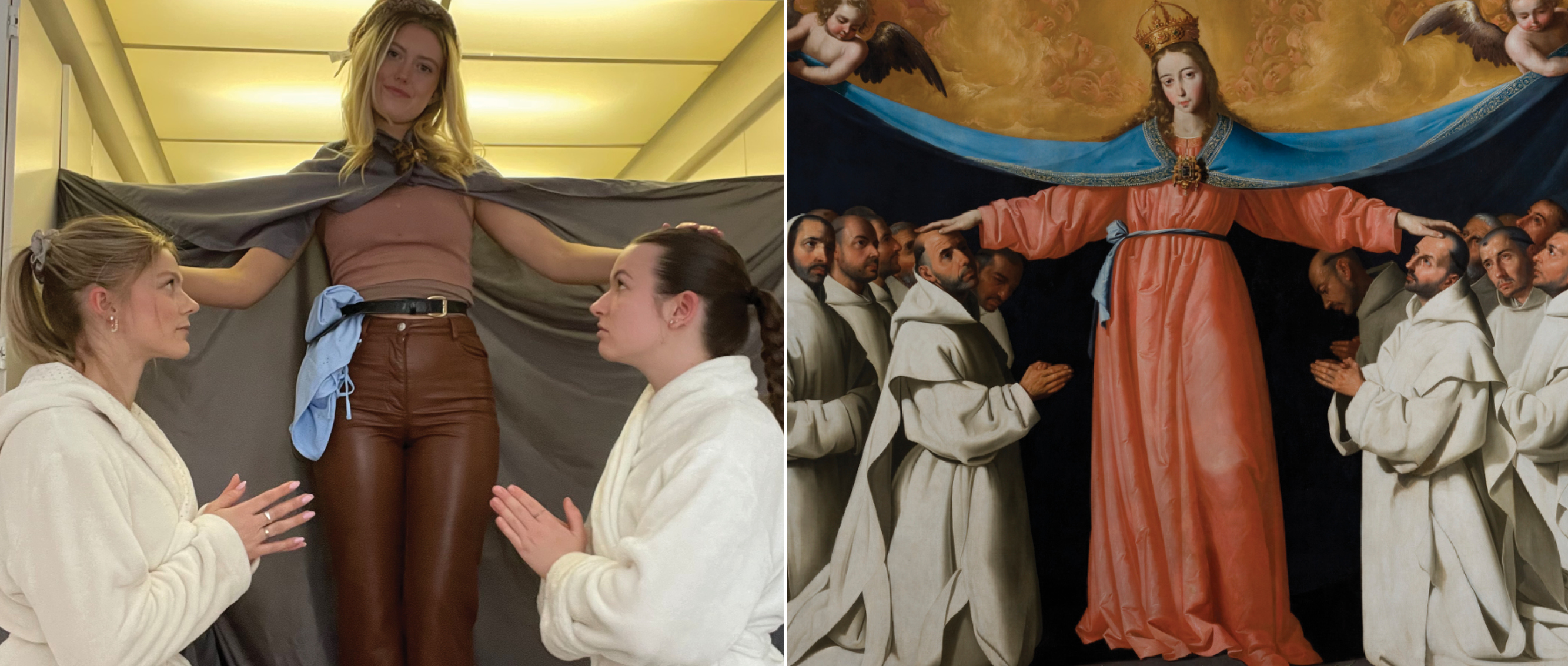

“Zurbarán skillfully interprets the spiritual principles which govern the lives of the Carthusians: silence, devotion to the Virgin Mary, and mortification through fasting.”
Source: Spainisculture.com
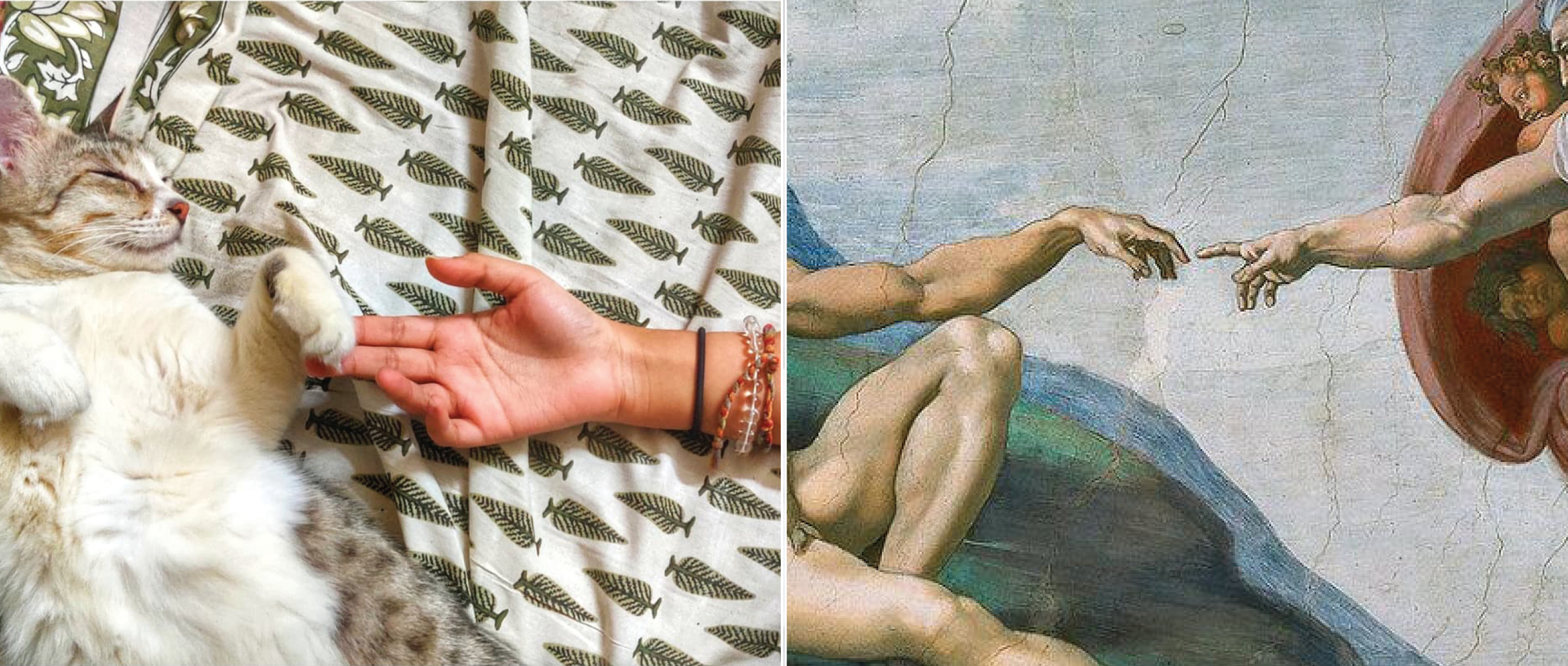

Submitted by: Meghna C.
“Spread across the ceiling of the Sistine Chapel, The Creation of Adam is perhaps the best-known fresco in the world. The painting depicts the Biblical creation of the first Man by God; while God and Adam do not touch, my cat and I can be seen holding hands because we do not maintain a hierarchical relationship (we do, but she's the boss).”
Source: Michelangelo.org
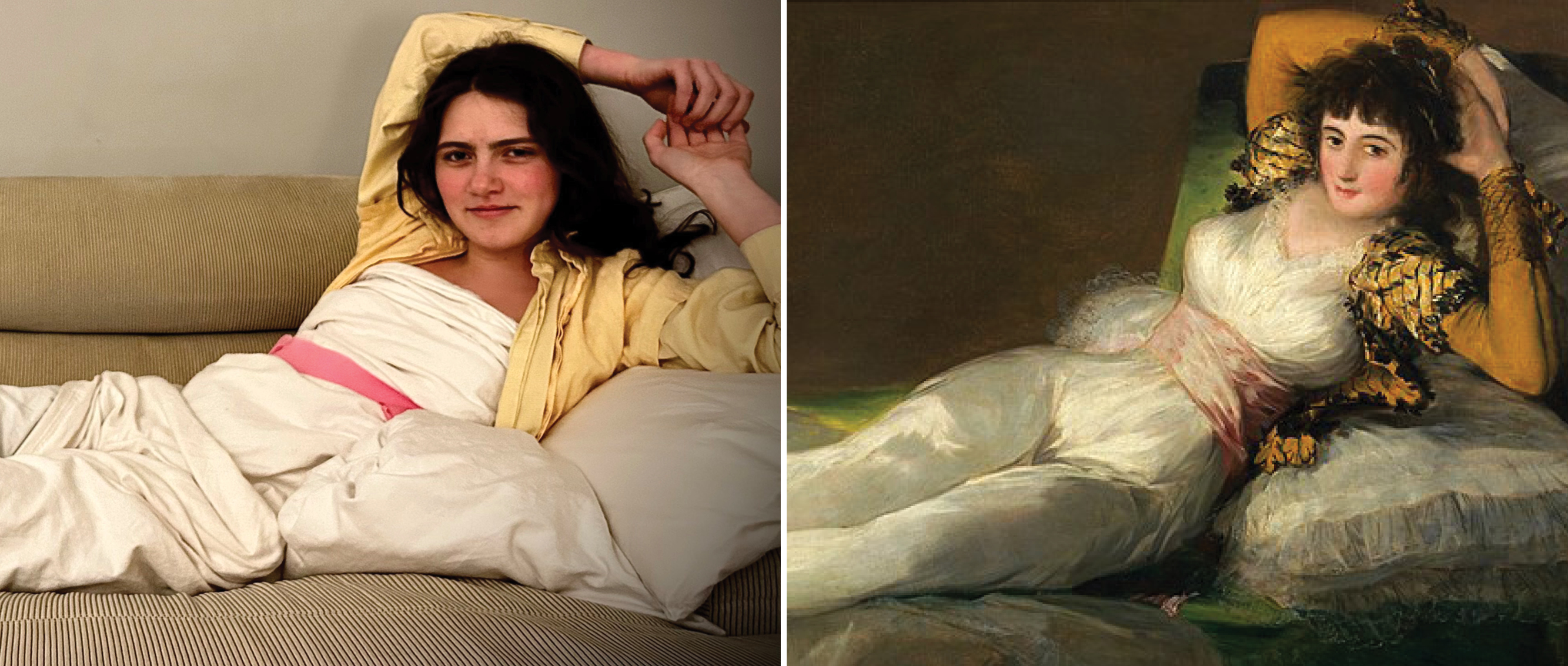

Source: Museodelprado.es
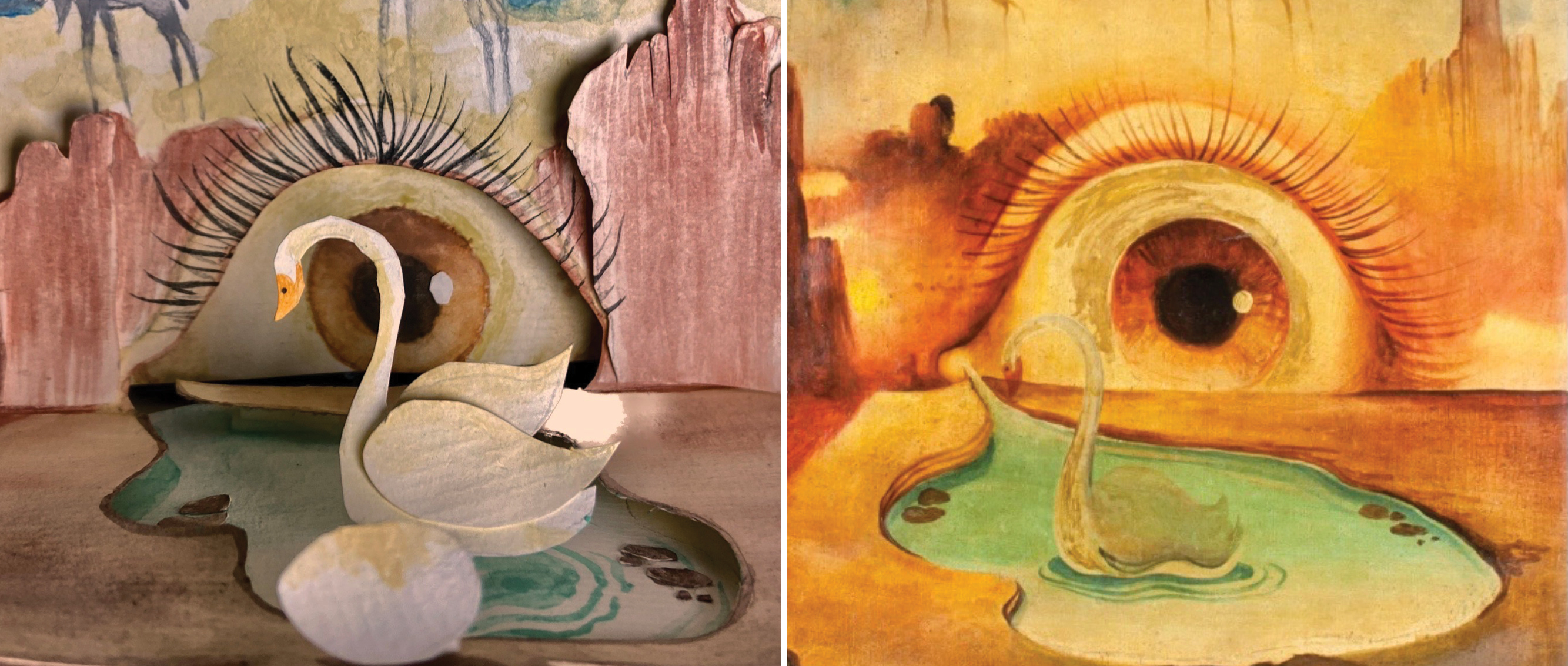

“Although Salvador Dalí became one of the most influential and well-known surrealist artists, he did not discover surrealism on his own. He developed a taste for surrealism in 1929 through Sigmund Freud's analysis of dreams and the imagination. Dalí developed a technique called ‘Paranoiac-Critical Method’ to access his subconscious and draw artistic inspiration from it. The Paranoiac-Critical Method aimed to allow Dalí to perceive the world in a new way free from imposed rationality or logic. This method allowed him to enter a state of paranoia (without the use of drugs) which caused hallucinations that emphasized different aspects of life that usually went unnoticed. This method was revolutionary to the world of surrealist art because it allowed Dalí to bring the subconscious into consciousness, make the imaginary real, and bring dreams to life through his paintings. As Dalí himself describes his method as; 'My whole ambition in the pictorial domain is to materialize the images of my concrete irrationality with the most imperialist fury of precision ... Paranoiac-critical activity organizes and objectifies in an exclusivist manner the limitless and unknown possibilities of the systematic association of subjective and objective significance in the irrational.' (Dalí, 1935).”
Source: 888auctions.com
References: Dalí S: La conquête de l’irrationnel. Paris, Éditions Surréalistes, 1935 Google Scholar
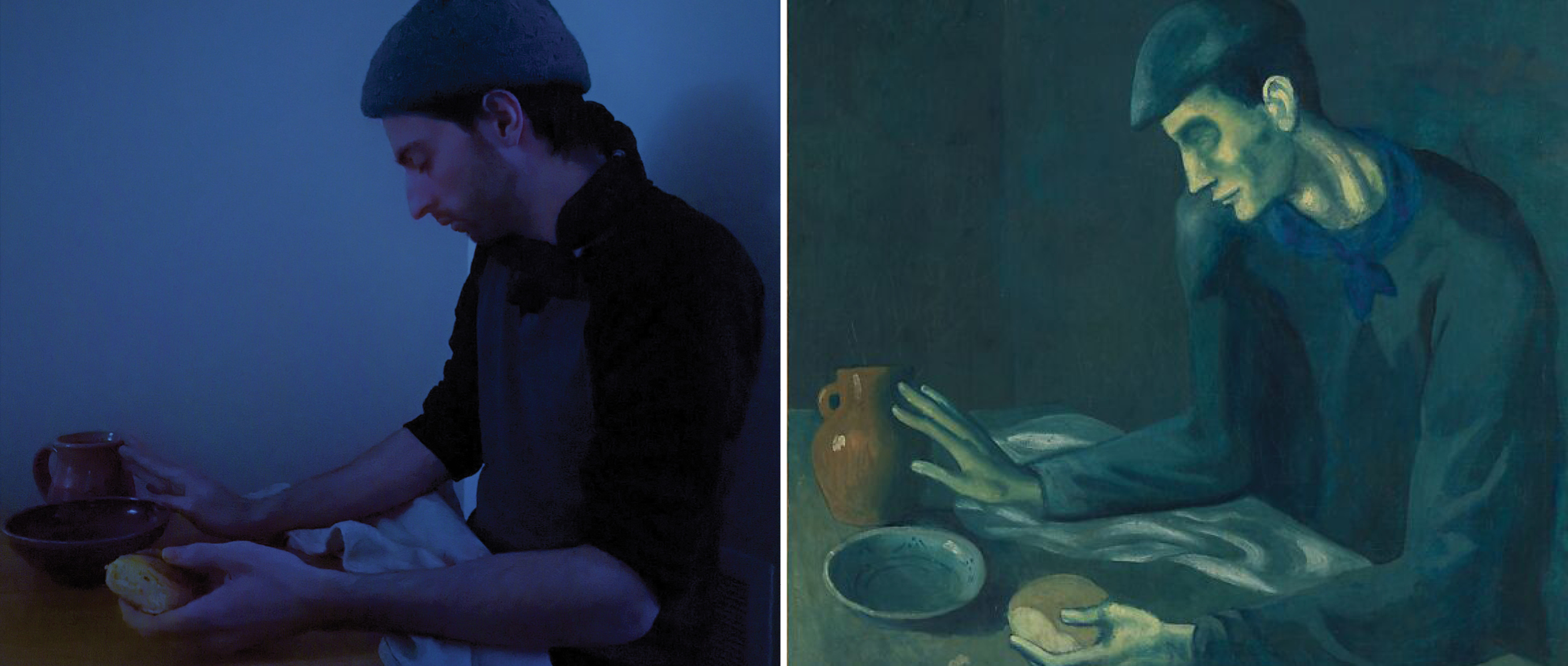

“Picasso’s The Blind Man’s Meal captures a glimpse of a man who has been completely worn down by the vicissitudes of life. Through this work, Picasso painted an emotional narrative about the innate suffering of human life. Despair, scarcity, and pessimism are certain emotions that every person feels at least once in their lives.”
Source: Artsapien.com
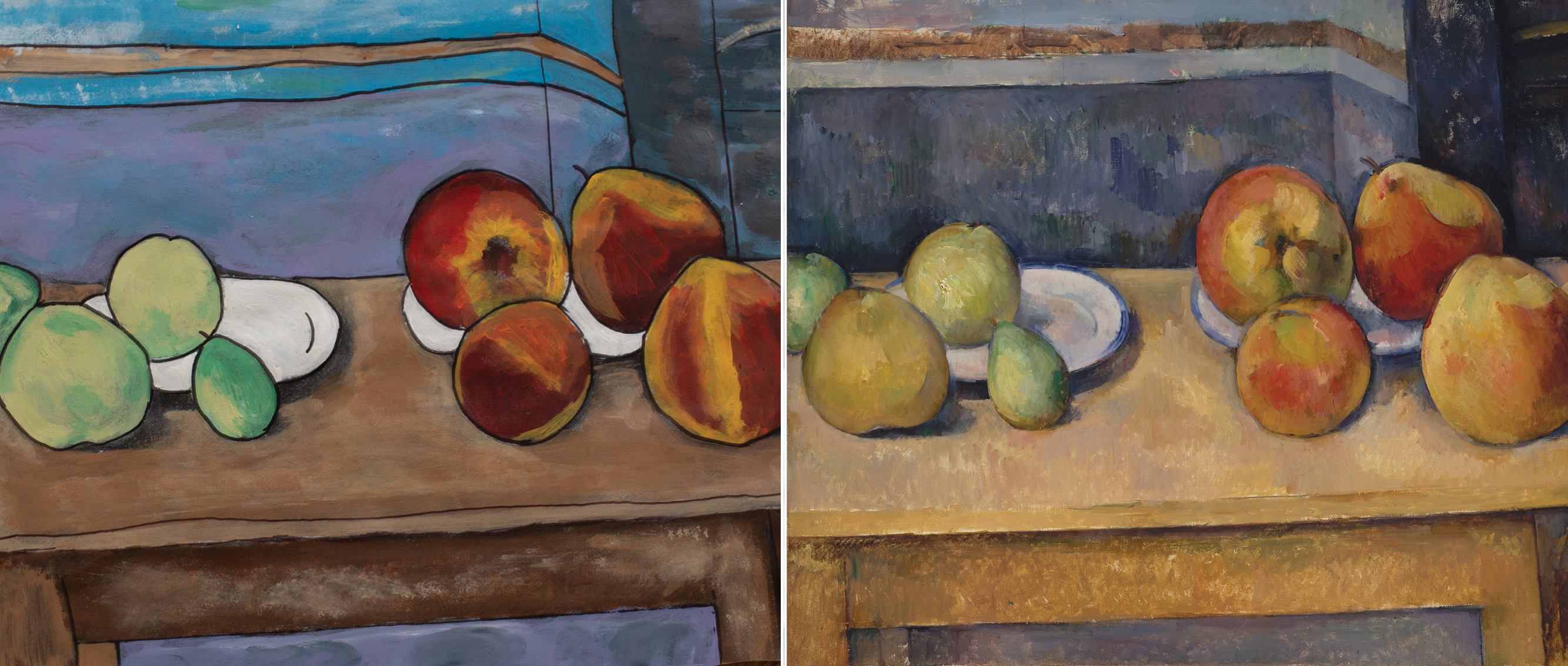

Submitted by: Anisha C.
“Cézanne once proclaimed, ‘With an apple I want to astonish Paris,’ and he succeeded … Turning to the Provençal apples and Beurré Diel pears grown in the vicinity of the family’s estate near Aix, he dispensed with traditional one-point perspective and examined the fruit, plates, and table from various viewpoints—straight on, above, and sideways.”
Source: Metmuseum.org


Source: 1000museums.com
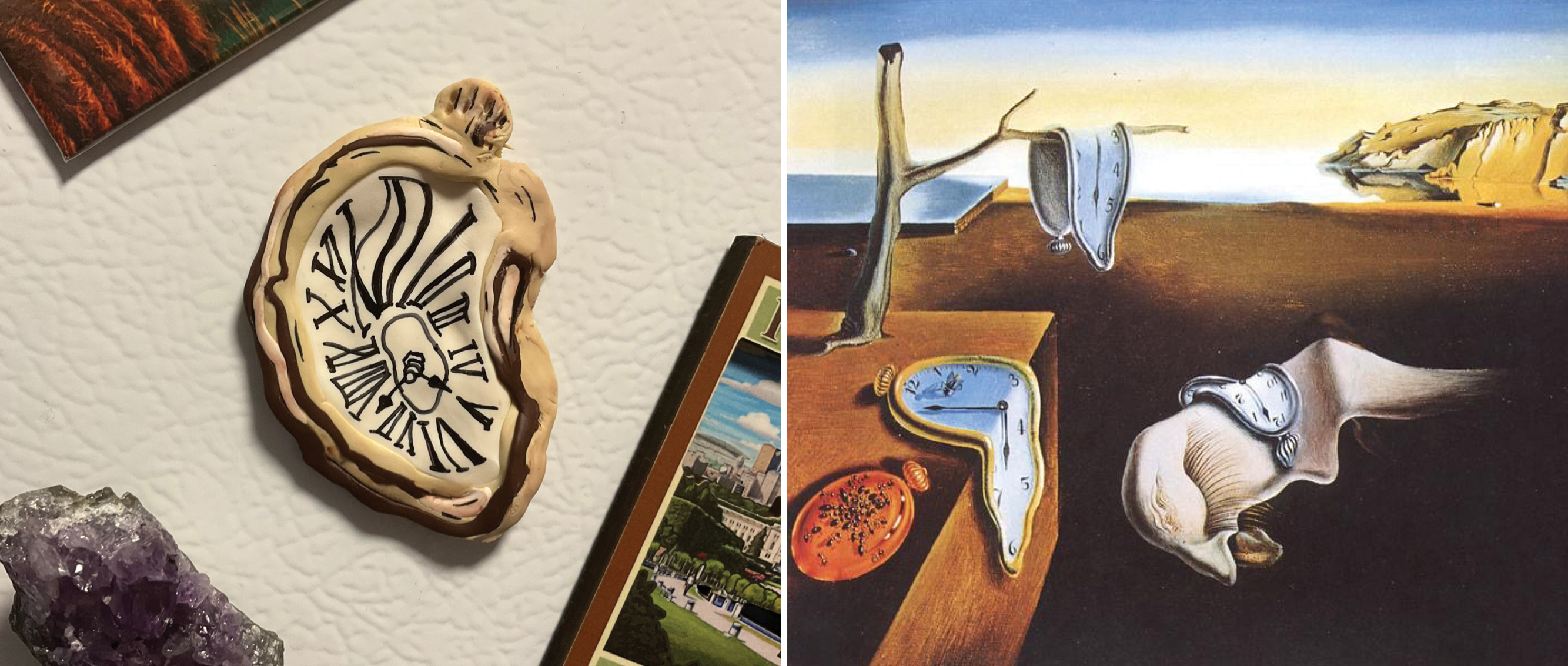

Submitted by: Ellen M.
“The Persistence of Memory is one of the most iconic and recognizable paintings of Surrealism … The idea of rot and decay is most evident in the gold watch on the left, which is swarmed by ants … He set the scene in a desolate landscape that was likely inspired by the landscape of his homeland, the Catalan coast … The melting watch … shows the disintegration of the world depicted in the original painting, reflecting a world changed by the nuclear age.”
Source: Wikiart.org
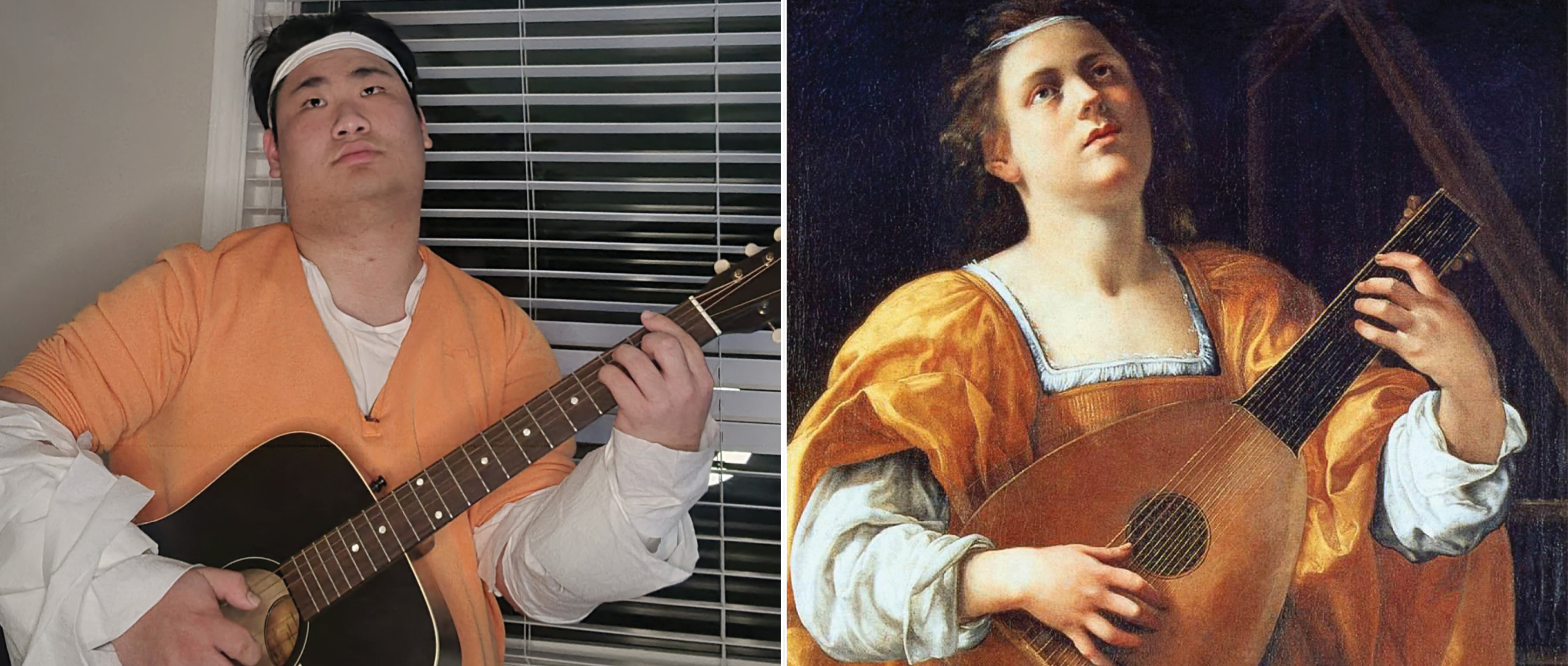

Submitted by: Keonhwi K.
"This is an early painting by the baroque painter Artemisia Gentileschi, a painter described as ‘a grand exception in the history of art—a successful woman painter in an era in which art was dominated by men.’"
Source: Wikiart.org


Submitted by: Molly B.
“Young Girl in the Park is an oil painting by French Impressionist artist Berthe Morisot, completed in 1893. The painting depicts a young girl dressed in white sitting on a bench in a park, surrounded by trees and foliage. The girl's pose and expression convey a sense of quiet contemplation and introspection. The loose brushstrokes exemplifies the Impressionist focus on capturing fleeting moments and the play of light and color. The painting is considered a prime example of Morisot's skill in depicting the subtle nuances of light and atmosphere, as well as her ability to imbue everyday scenes with a sense of poetry and emotion.”
Source: Wikipedia.org


Source: Arthistorynewsreport.blogspot.com
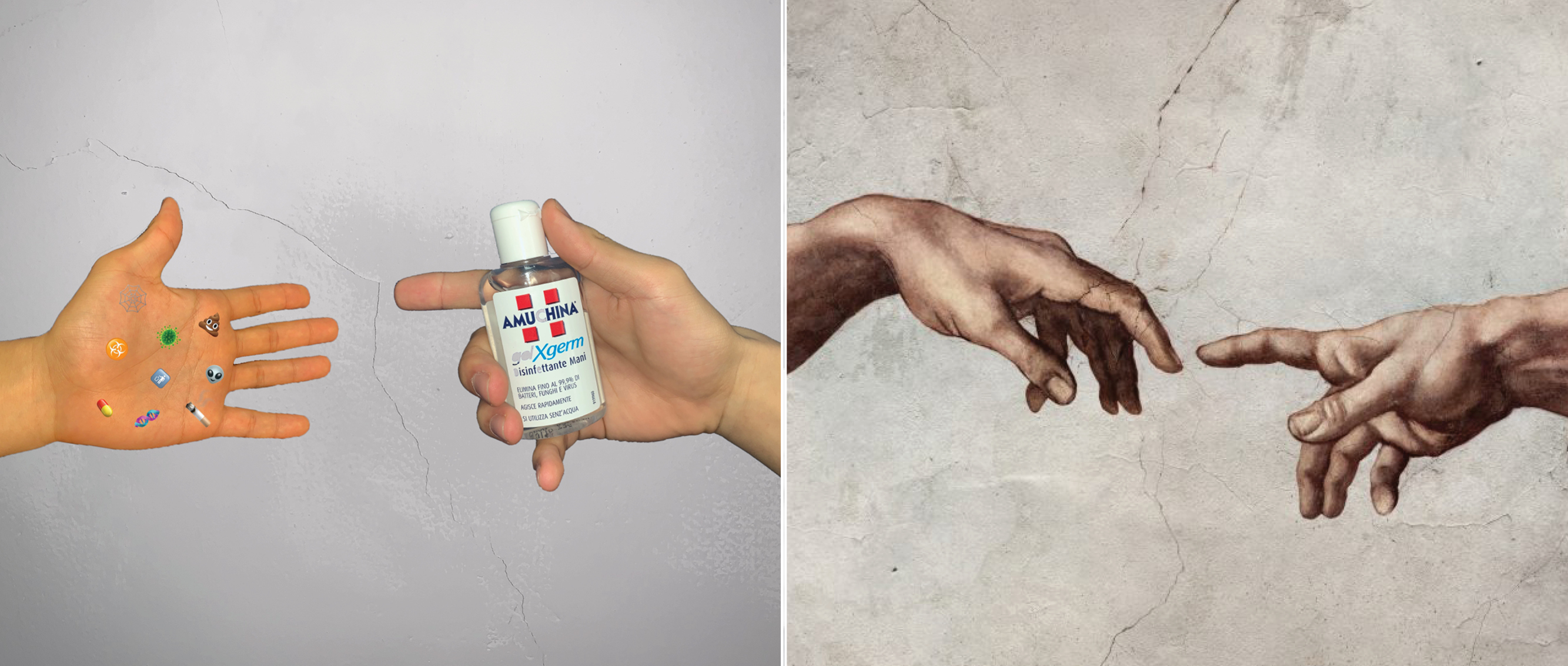

Submitted by: Mengxiong J.
“The Creation of Adam (Italian: Creazione di Adamo) is a fresco painting by Italian artist Michelangelo, which forms part of the Sistine Chapel's ceiling. It illustrates the Biblical creation narrative from the Book of Genesis in which God gives life to Adam, the first man.”
Source: Wikipedia.org
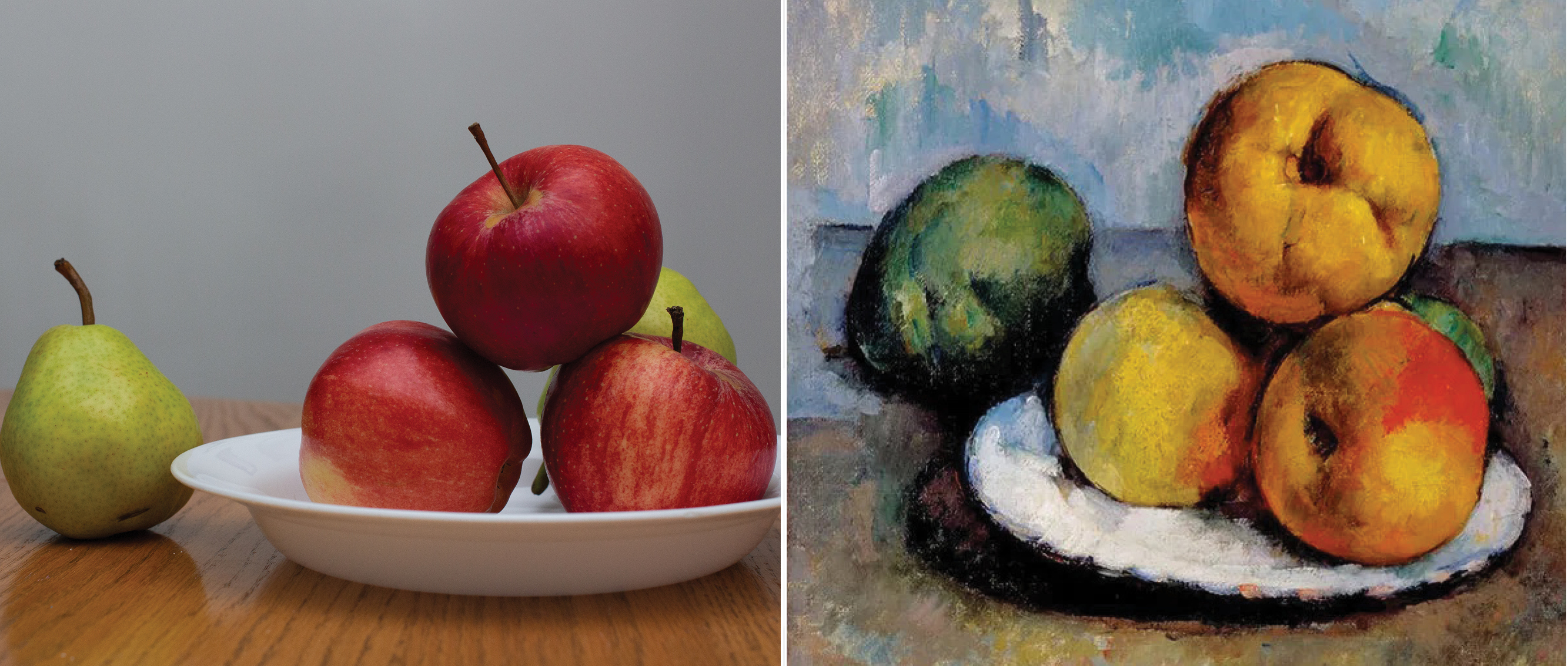

Submitted by: Anisha C.
“This still life of fruit is by Post-Impressionist Paul Cézanne. His experiments with form and materiality were particularly influential for Pablo Picasso and Paul Klee.”
Source: Arsy.net


“The Clothed Maja is one of the masterpieces by Francisco Goya. The identity of the Maja is still a mystery. When he painted this, he was trying to prove that a woman can be seductive regardless of what she is wearing. It is a clothed version of the earlier La maja desnuda, which was created between 1795 and 1800. Goya poured confidence into the canvas as he made loose brushstrokes and used thick layers of paint. Partially, the beauty of this piece relies on her thin, girded tunic that suggests there is a fan nearby.”
Source: Wikipedia.org
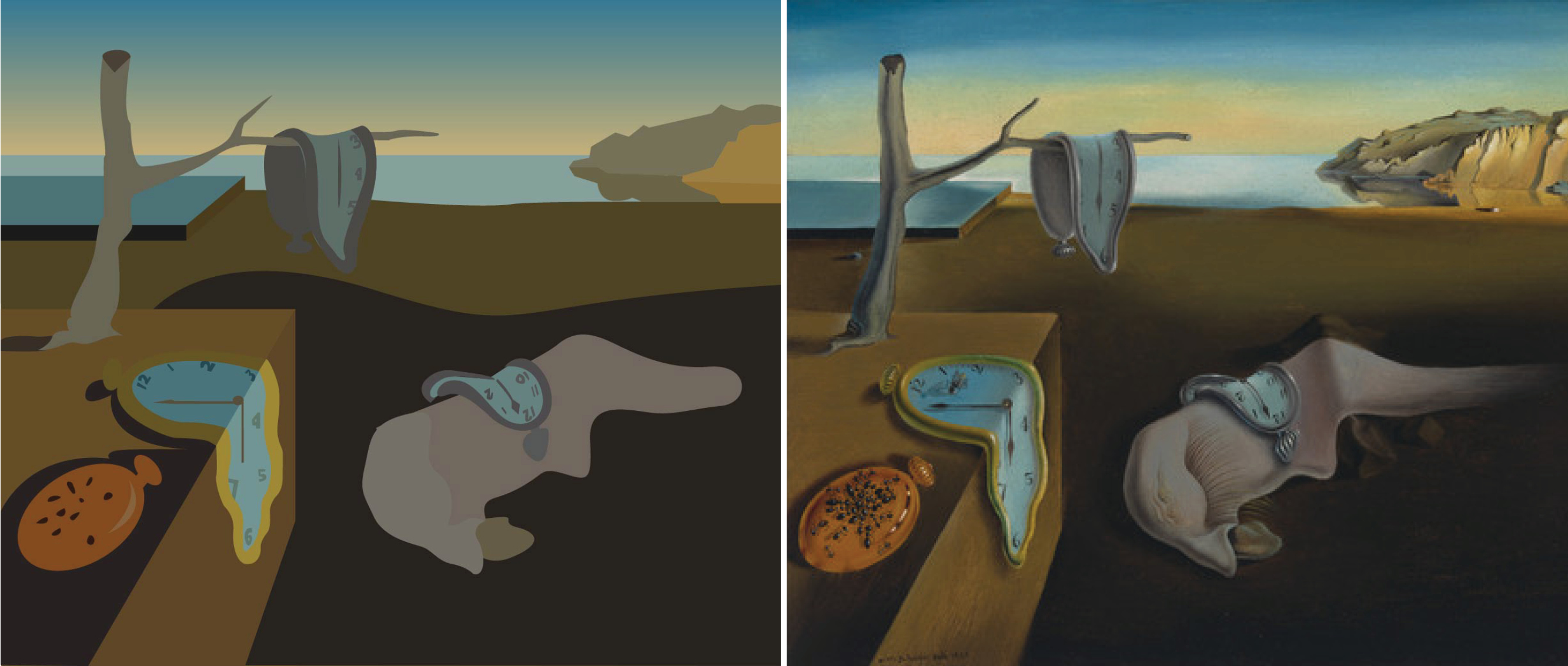

“Hard objects become inexplicably limp in this bleak and infinite dreamscape, while metal attracts ants like rotting flesh … The distant golden cliffs are the coast of Catalonia, Dalí’s home.”
Source: MoMA.org
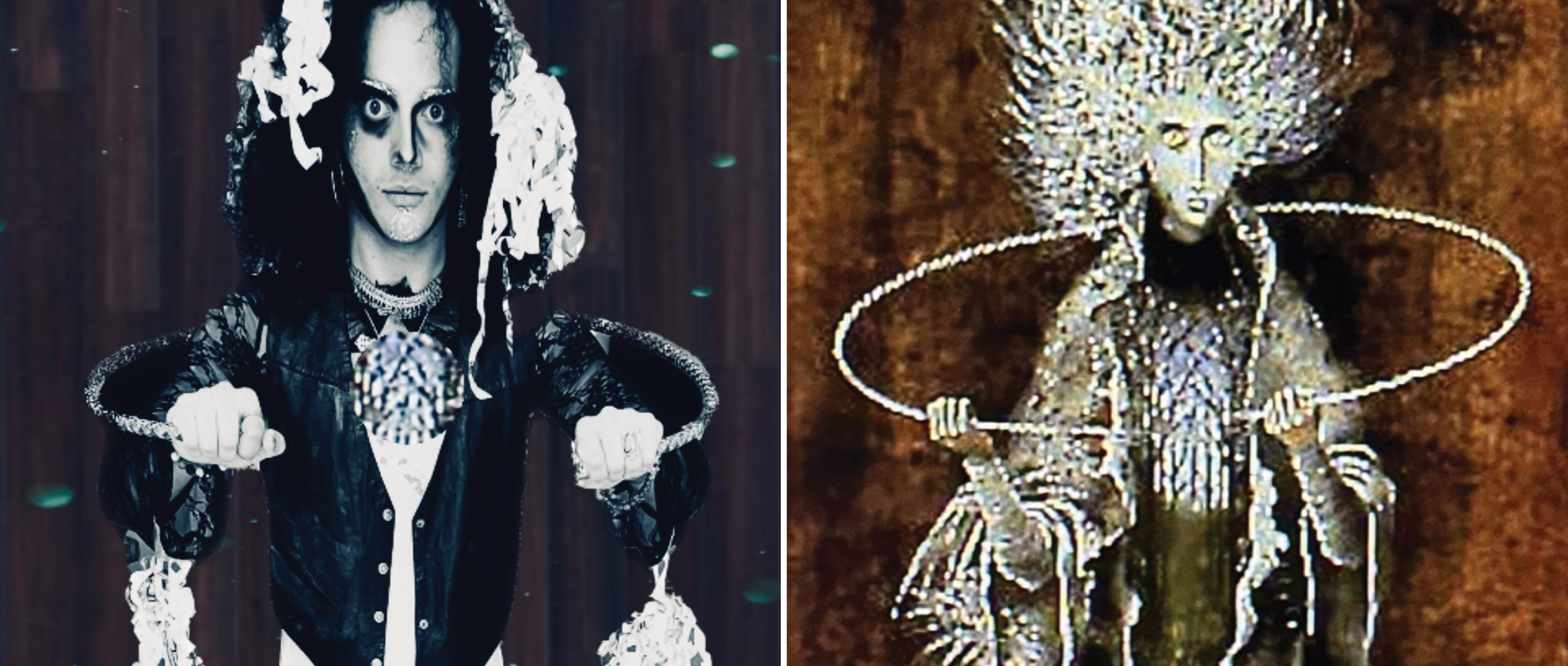

Submitted by: Zach H.
“Remedios Varo depicts the character of an androgenous figure breaking free from restraint into new found spiritual purity. Eyes wide and staring as in a trance, the character pull apart the rope around their body. The act electrifies their hair. Remedios Varo captures the intensity of this moment with silver tones cast across the painting. As the circle is broken a green forest is revealed within the chest of the figure. This deep dwelling place of unconscious is now made accessible. My friend Liam depicts the bird accompanying the character. A parrot who symbolized transcendence and the marking of a spiritual breakthrough. Remedios Varo eloquently blends her cultural and spiritual influences into this surrealist piece. It feels like an extension of her own personality.”
Source: Reddit.com
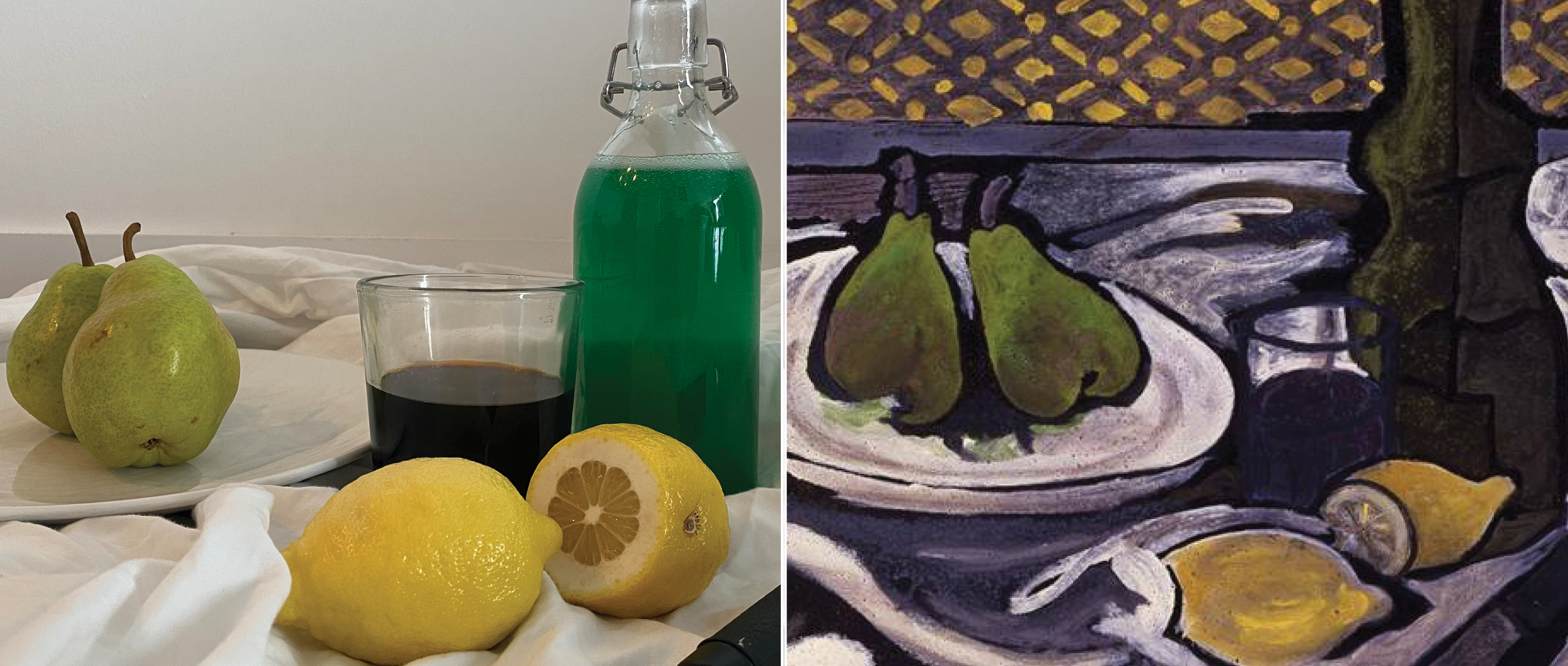

“This collection of art from Georges Braque was special because it combined traditional art subjects like fruit in still life with his more modern approach to art creating a synergistic effect that is highly related to the movement of avant-garde.”
Source: Portlandmuseum.org
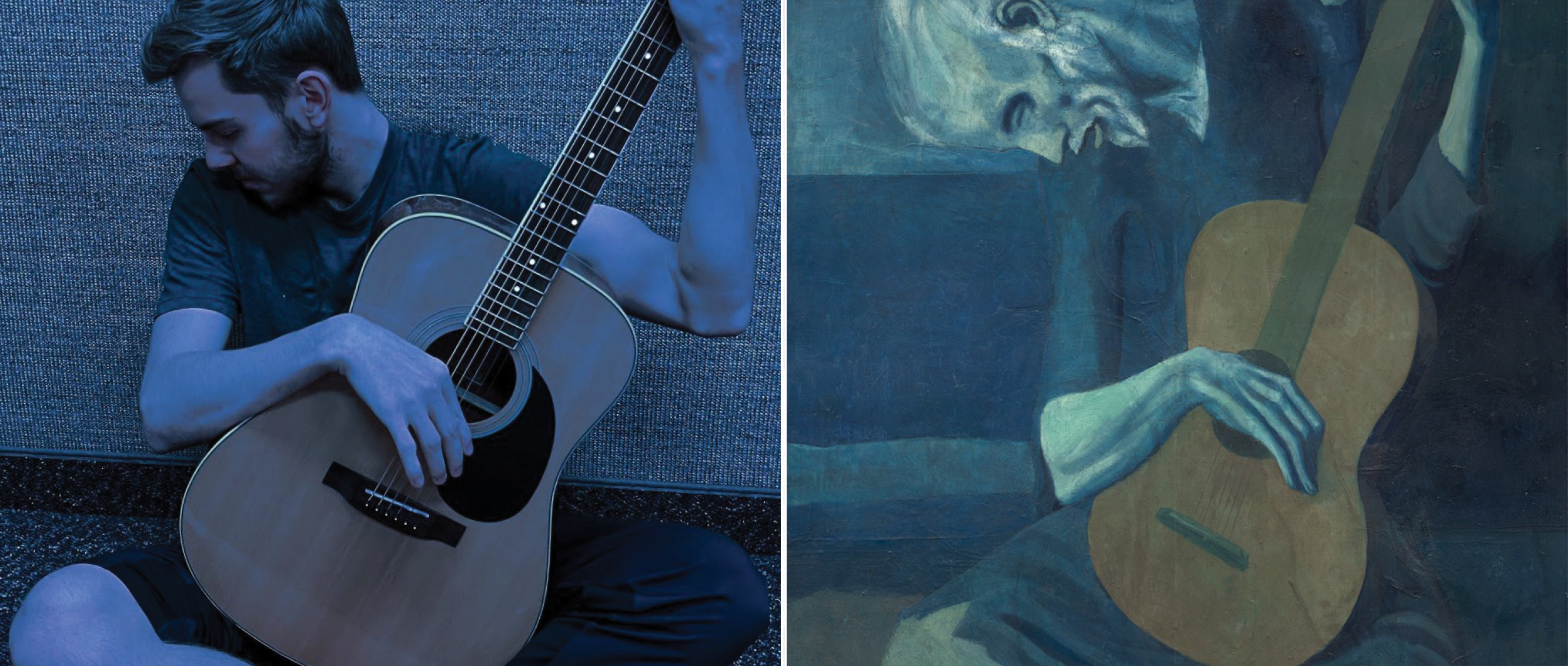

Submitted by: Aidan F. and Kolea P.
"In Picasso’s paintings of his Blue Period (1901-04), the artist restricted himself to a cold, monochromatic blue palette, flattened forms, and emotional, psychological themes of human misery and alienation.”
Source: Artic.edu
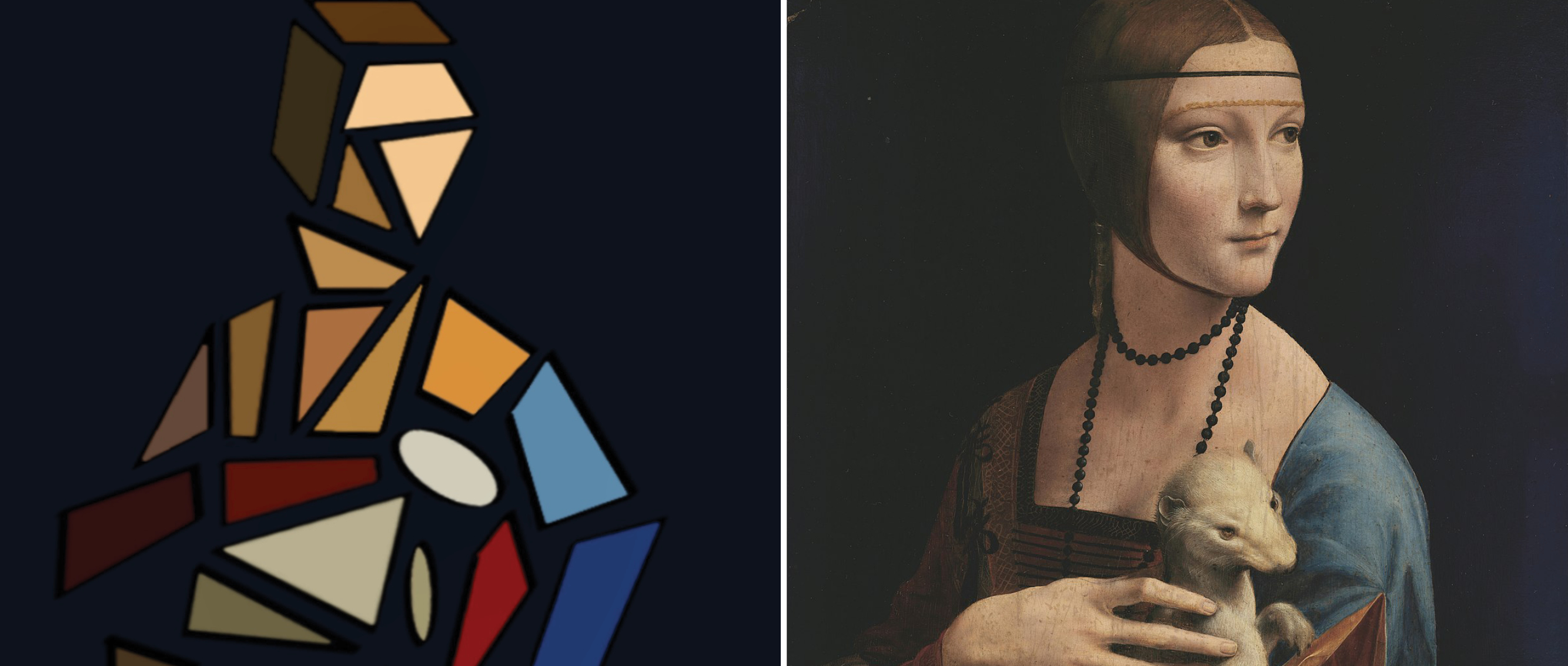

Submitted by: Jenny Z.
"The painting’s subject is Cecilia Gallerani, a mistress of Ludovico Sforza, Duke of Milan; Leonardo was painter to the Sforza court in Milan at the time of its execution. It is the second of only four surviving portraits of women painted by Leonardo.”
Source: Wikipedia.org
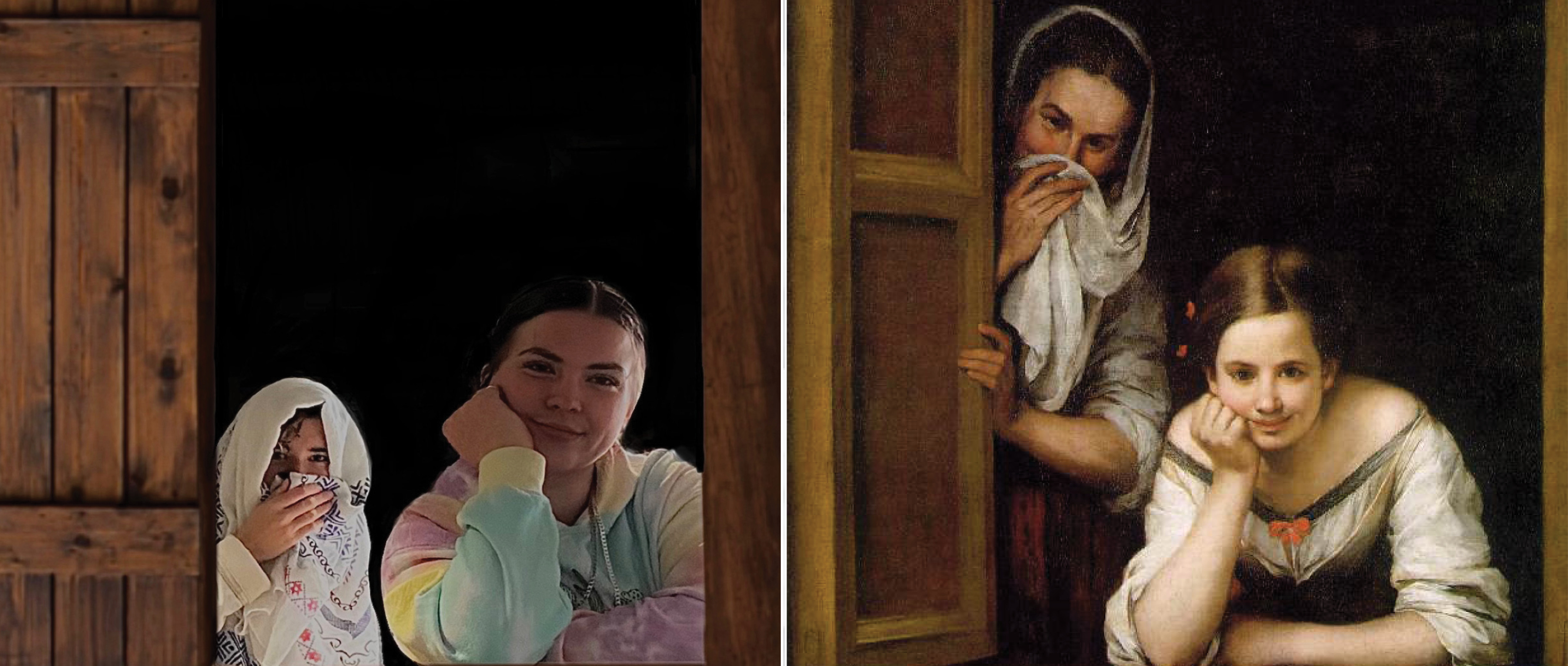

Submitted by: Victoria D.
“A standing woman attempts to hide a smile with her shawl as she peeks from behind a partially opened shutter, while a younger woman leans on the windowsill, gazing out at the viewer with amusement. The difference in their ages might indicate a chaperone and her charge, a familiar duo in upper-class Spanish households. Covering one's smile or laugh was considered good etiquette among the aristocracy.”
Source: NGA.gov


Submitted by: Saharah B.
“Referencing classical pre-Columbian Izquincles, a dog of Mexican origin, Tamayo’s dog, meditates on the vastness of nature and the cosmos.”
Source: Denisbloch.com
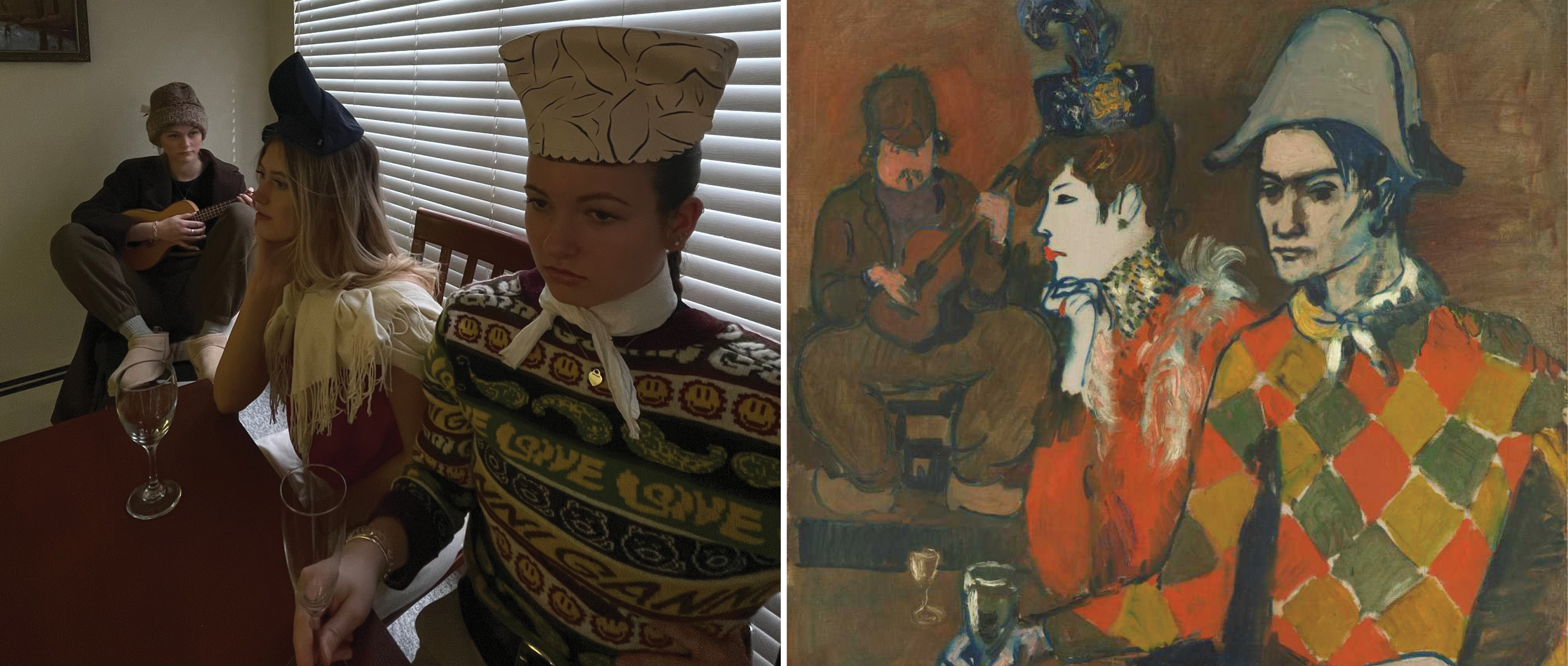

“In this celebrated work, now an icon of life in bohemian Paris at the turn of the last century, Picasso depicts himself dressed as a Harlequin. He is accompanied by his recent lover Germaine Pichot. Previously, she had been the fatal obsession of Picasso's great friend Casagemas, who committed suicide in 1901.”
Source: Metmuseum.org


Source: Luisromeropintor.com
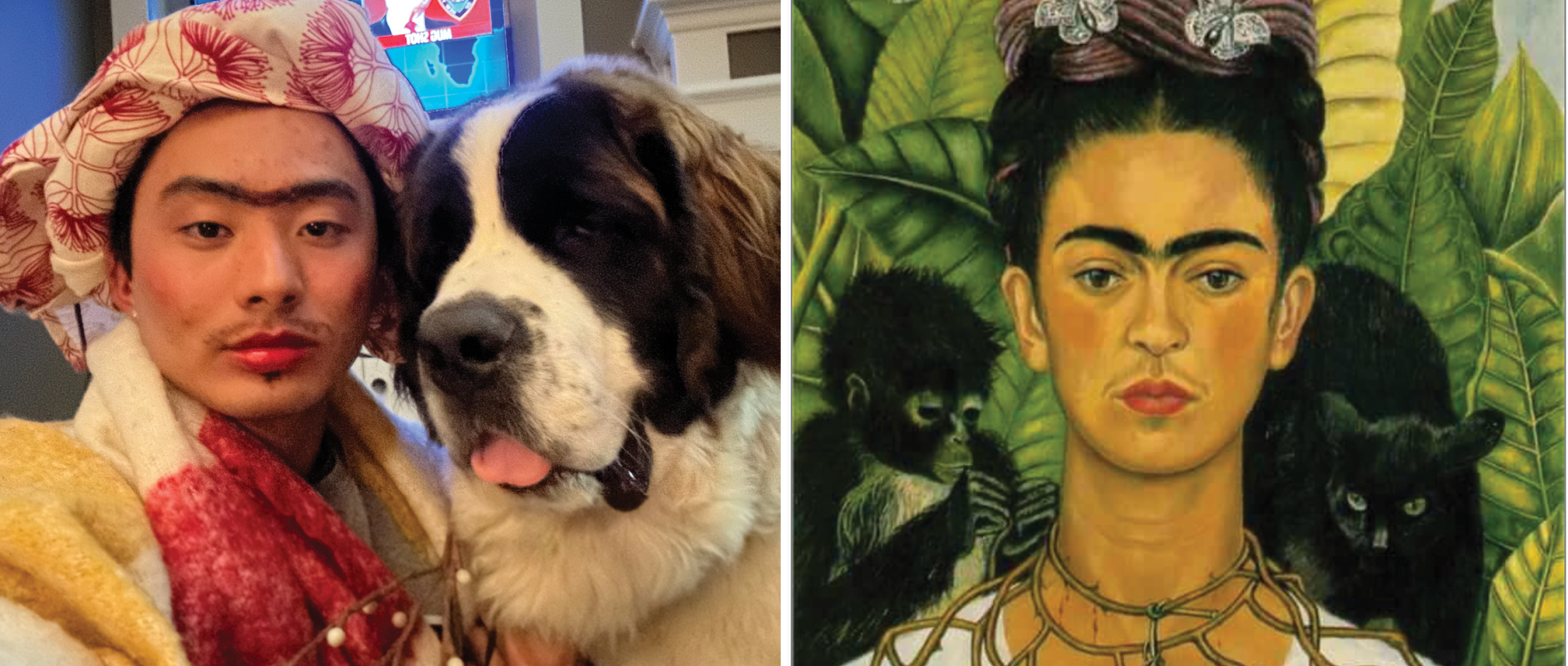

Submitted by: Karma L.P.
"This is one of many Frida Kahlo self-portraits. In this one, she has painted a self-portrait with thorns and her monkey and cat.”
Source: Arthistoryproject.com
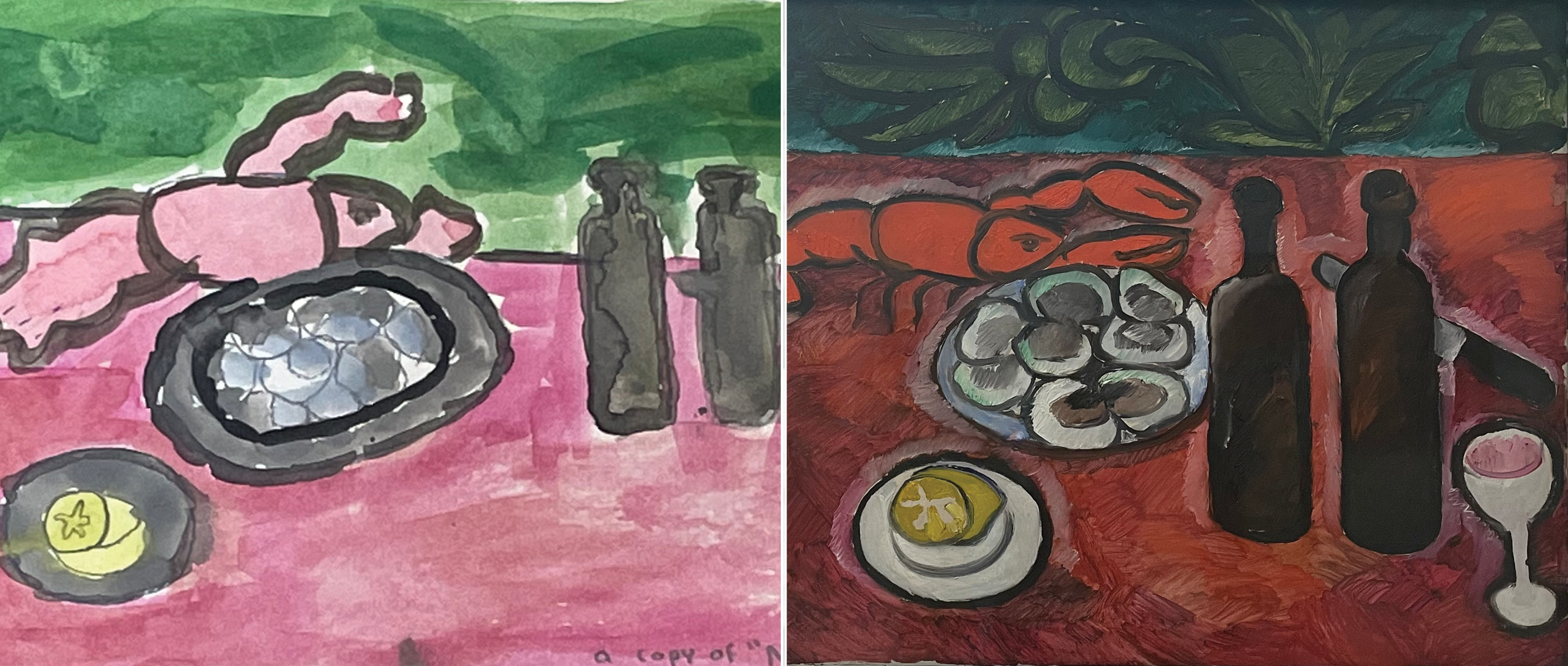

Submitted by: Joelle Z.
Source: Centerpompidou.fr
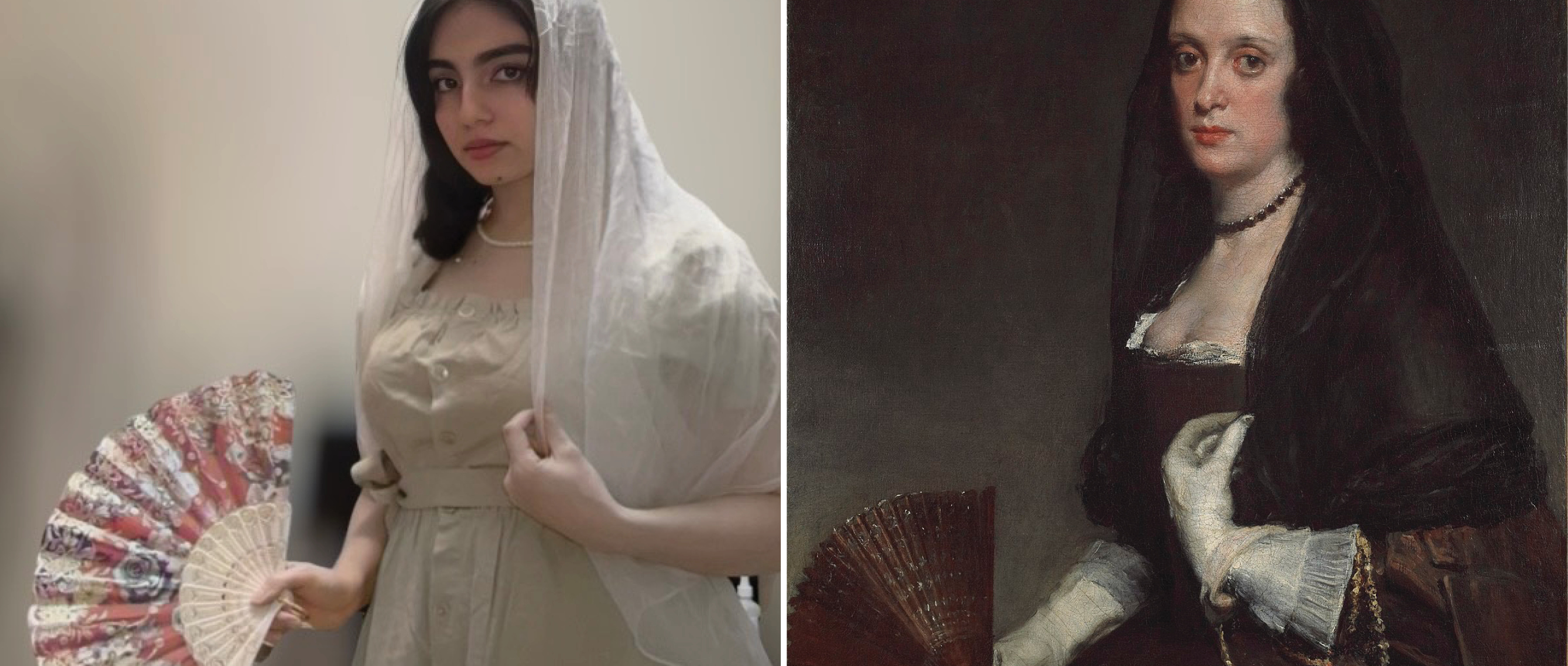

Source: Wikipedia.org
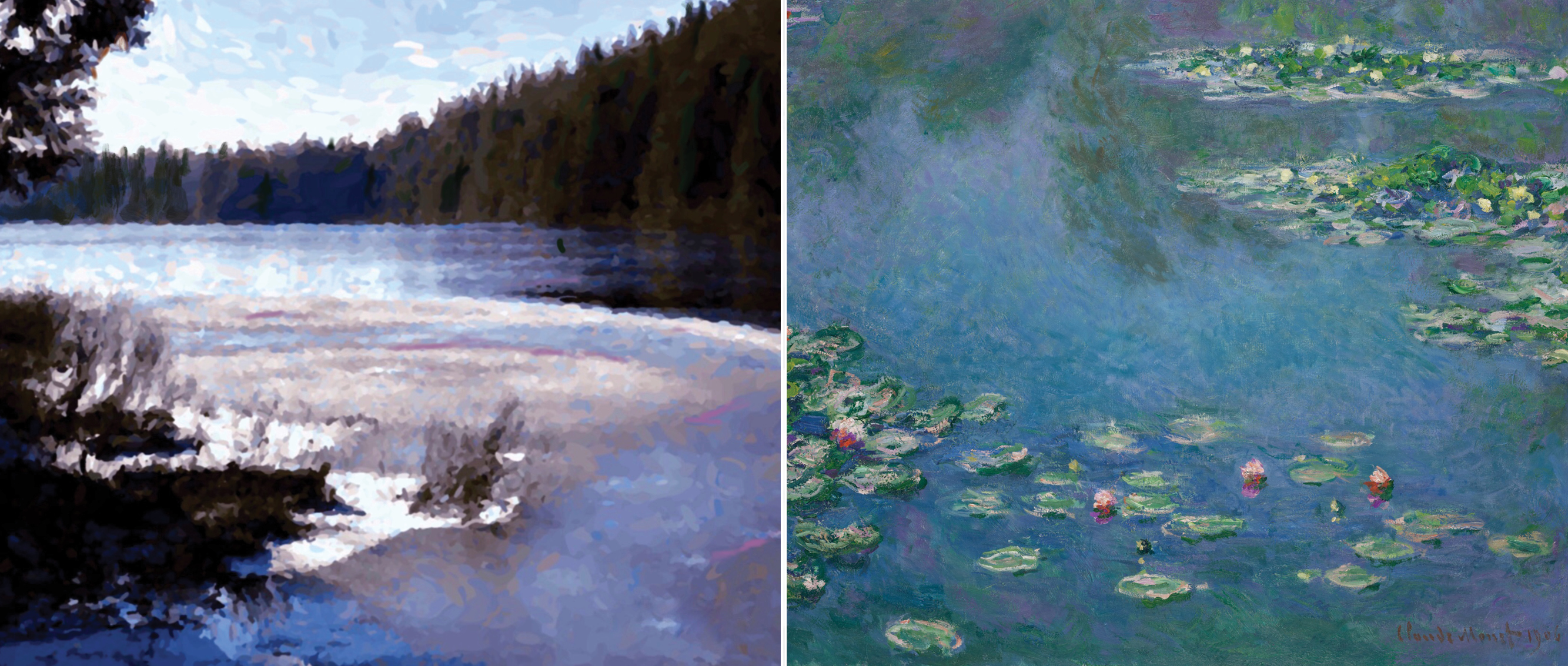

Submitted by: Ashley H.
“The water landscapes [were] produced at [Monet's] home in Giverny, France … The focal point of these paintings was the artist’s beloved flower garden, which featured a water garden and a smaller pond spanned by a Japanese footbridge.”
Source: Artic.edu
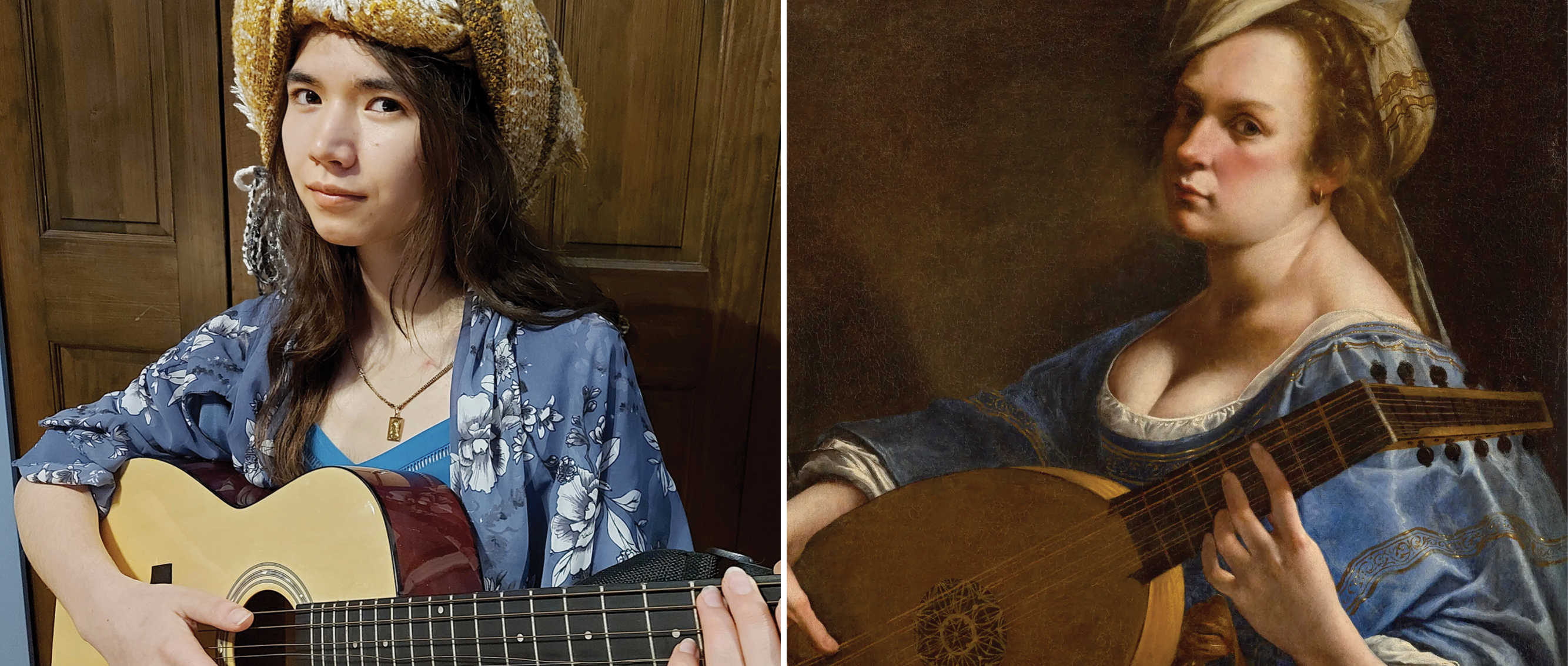

Submitted by: Olivia R.
“The artist depicts herself in the guise of a 'gypsy-musician', denoted by the headscarf and low-cut blouse; these style of entertainers would have appeared at Italian court performances. The accurate depiction of the lute as well as the finger positioning has led historians to believe that the artist had first-hand experience with the instrument.”
Source: Wikipedia.org
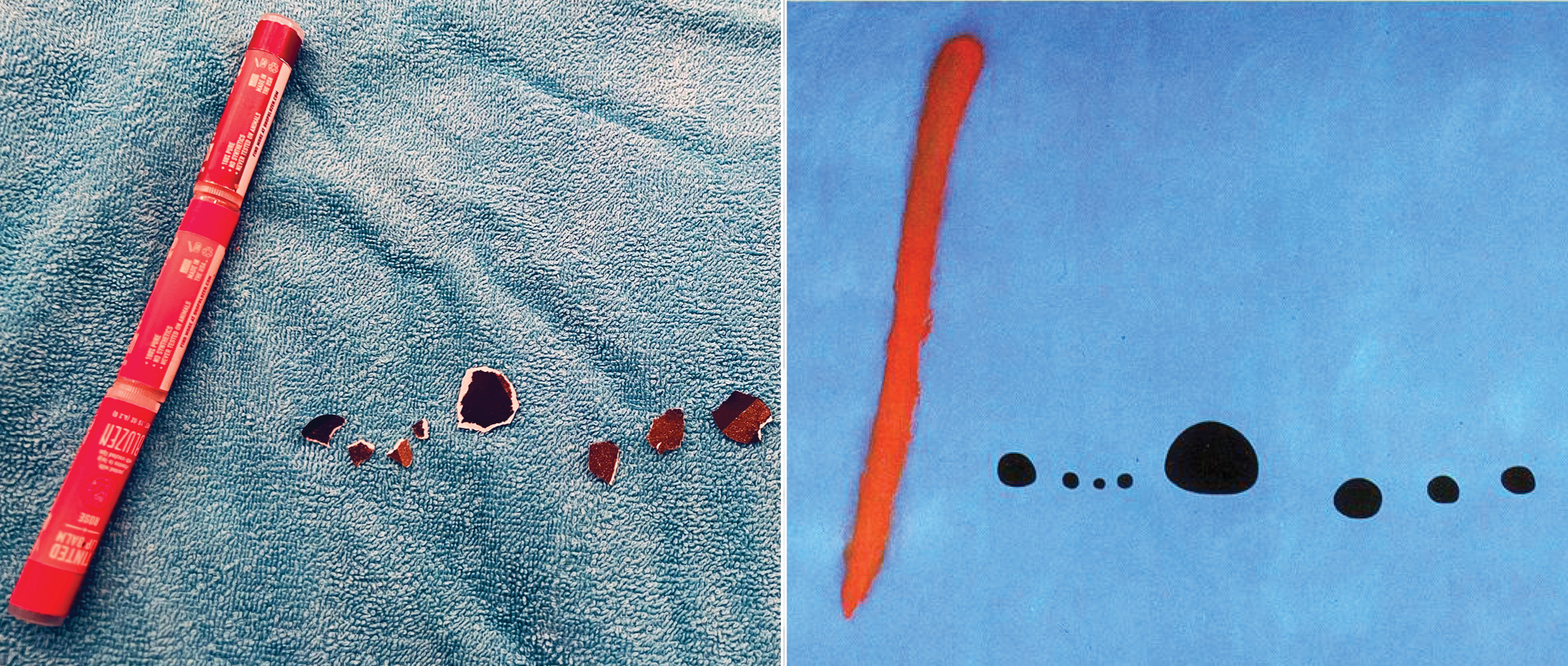

“This painting is by the famous Spanish painter, Joan Miró, who based much of his artwork around the colour blue. He also liked to incorporate Catalan pride into his art pieces, a number of which depicted landscapes.”
Source: Wikiart.org


“This fresco was painted on the wall of a church in Borja, Spain around 90 years ago by Elías García Martínez. In 2012 it was restored by Cecilia Giménez, an amateur artist and parishioner. In the last decade the restored fresco has attracted enough visitors and donations to fund multiple places in care homes for the elderly people of Borja most at need of help.”
Source: Static01.nyt.com
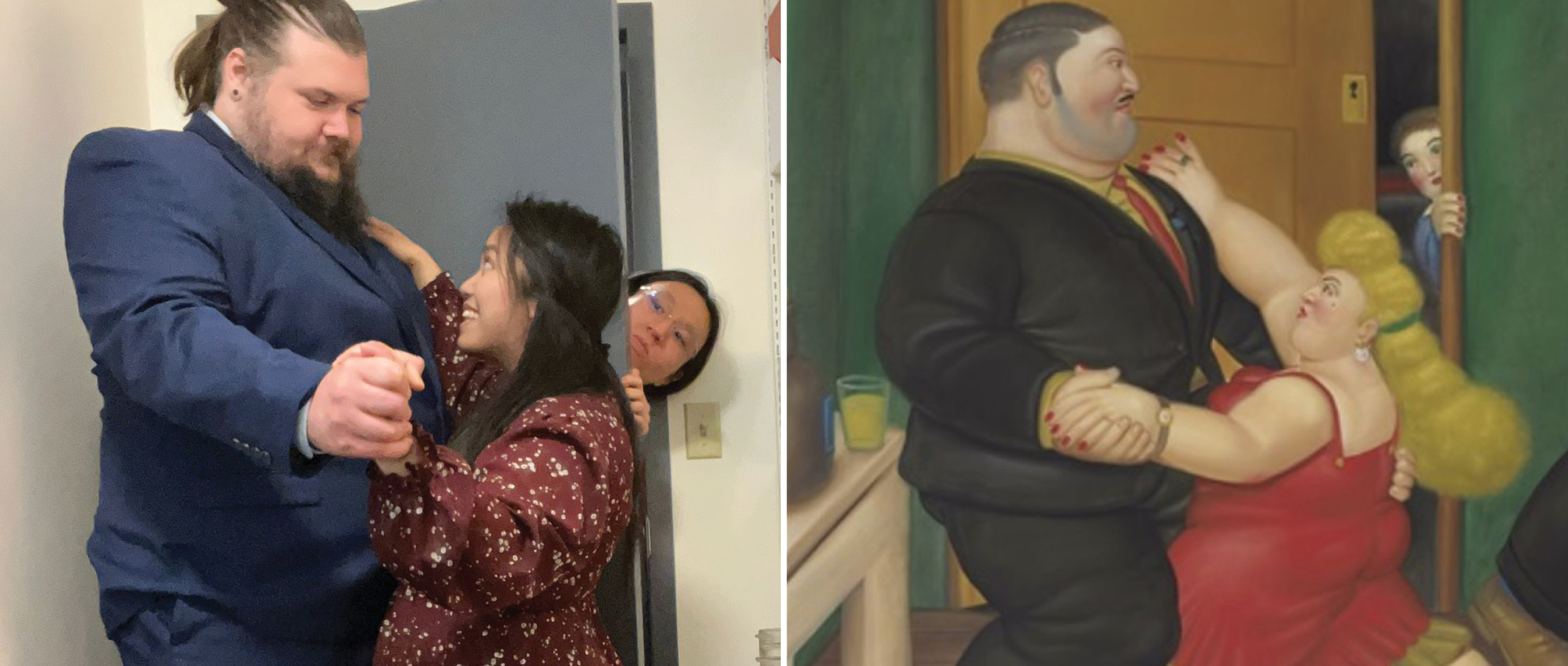

Submitted by: Brendan S.
“Fernando Botero Angulo is a Colombian figurative artist and sculptor, born in Medellín. His signature style, also known as ‘Boterismo’, depicts people and figures in large, exaggerated volume, which can represent political criticism or humor, depending on the piece. He is considered the most recognized and quoted living artist from Latin America, and his art can be found in highly visible places around the world.”
Source: Artvee.com
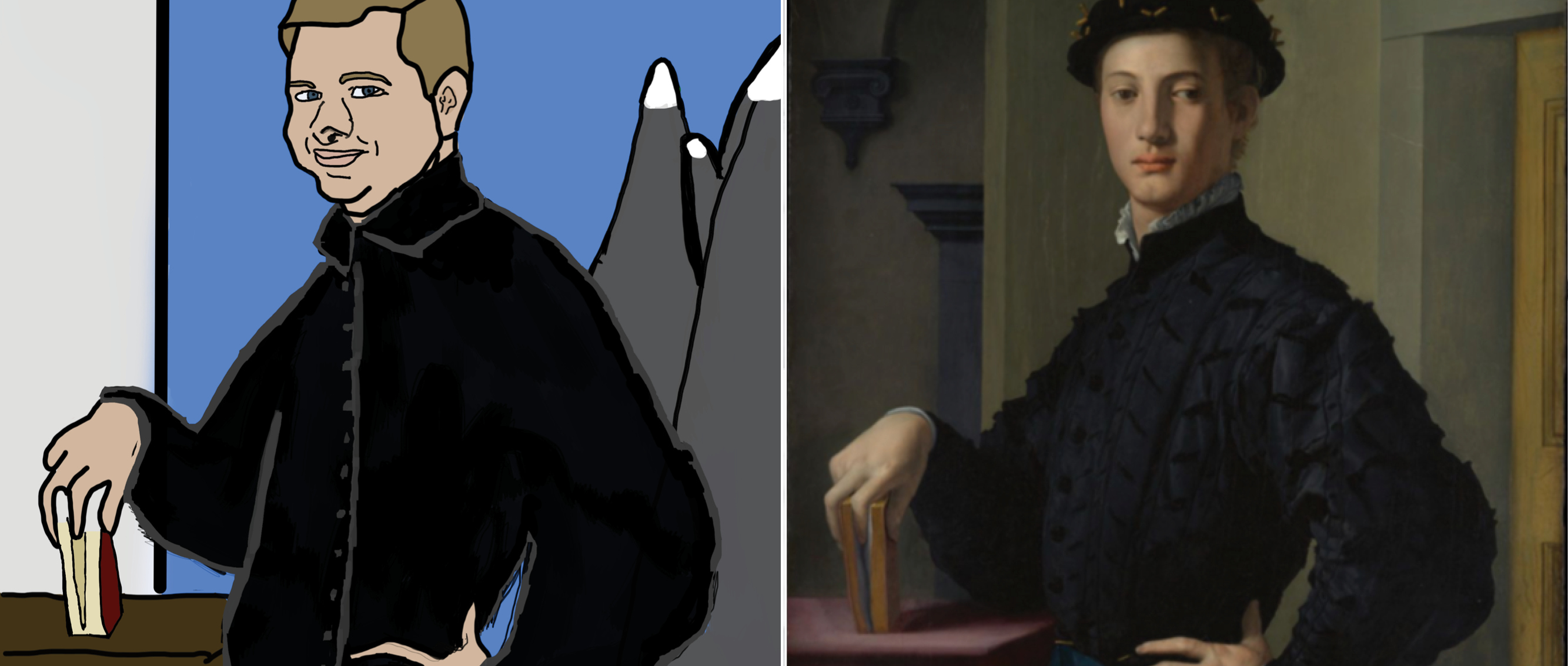

Submitted by: Knox F.
"The fanciful and witty details in this picture—the carved grotesque heads on the table and chair and the masklike face suggested in the folds of the youth's breeches—would have been appreciated by writers as comments on masks and identity.”
Source: Google Arts & Culture
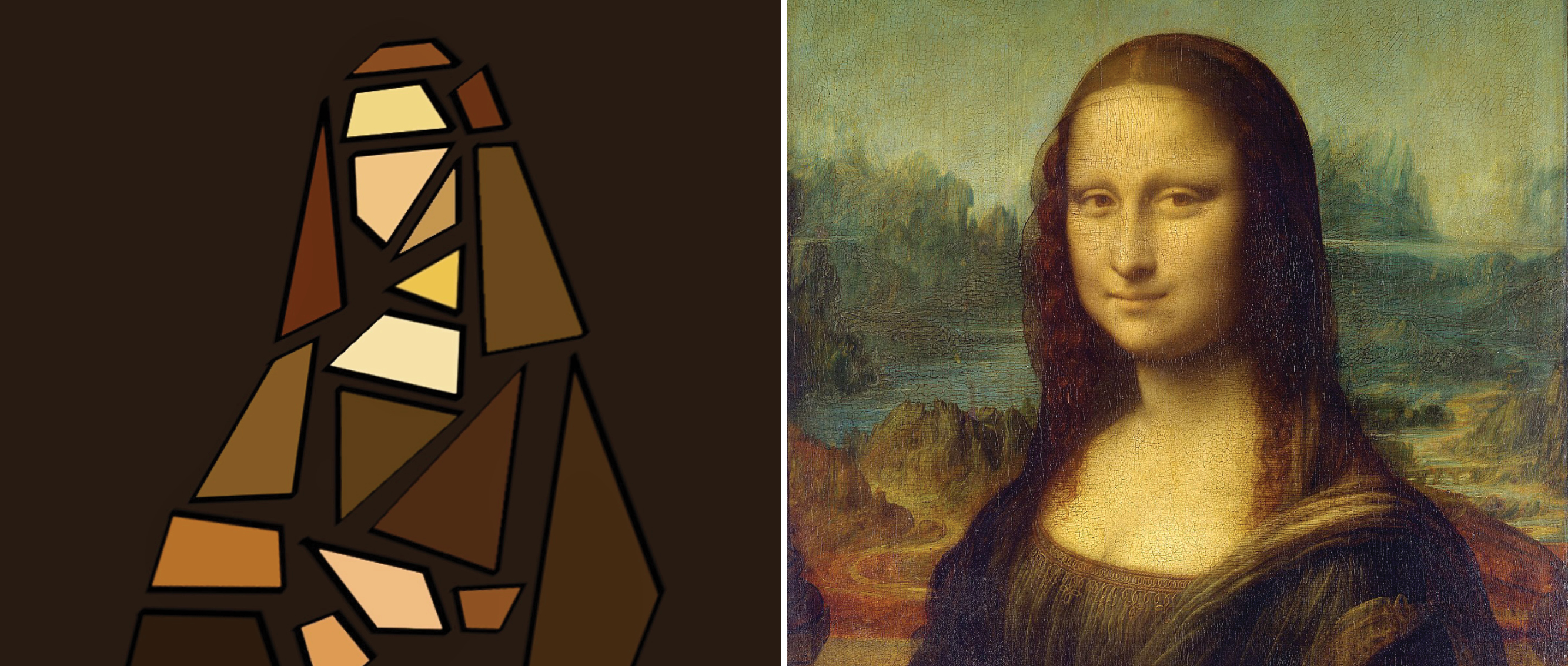

Submitted by: Jenny Z.
"Considered an archetypal masterpiece of the Italian Renaissance, it has been described as ‘the best known, the most visited, the most written about, the most sung about, the most parodied work of art in the world’. The painting's novel qualities include the subject's enigmatic expression, monumentality of the composition, the subtle modelling of forms, and the atmospheric illusionism. The painting has been definitively identified to depict Italian noblewoman Lisa del Giocondo.”
Source: Wikipedia.org
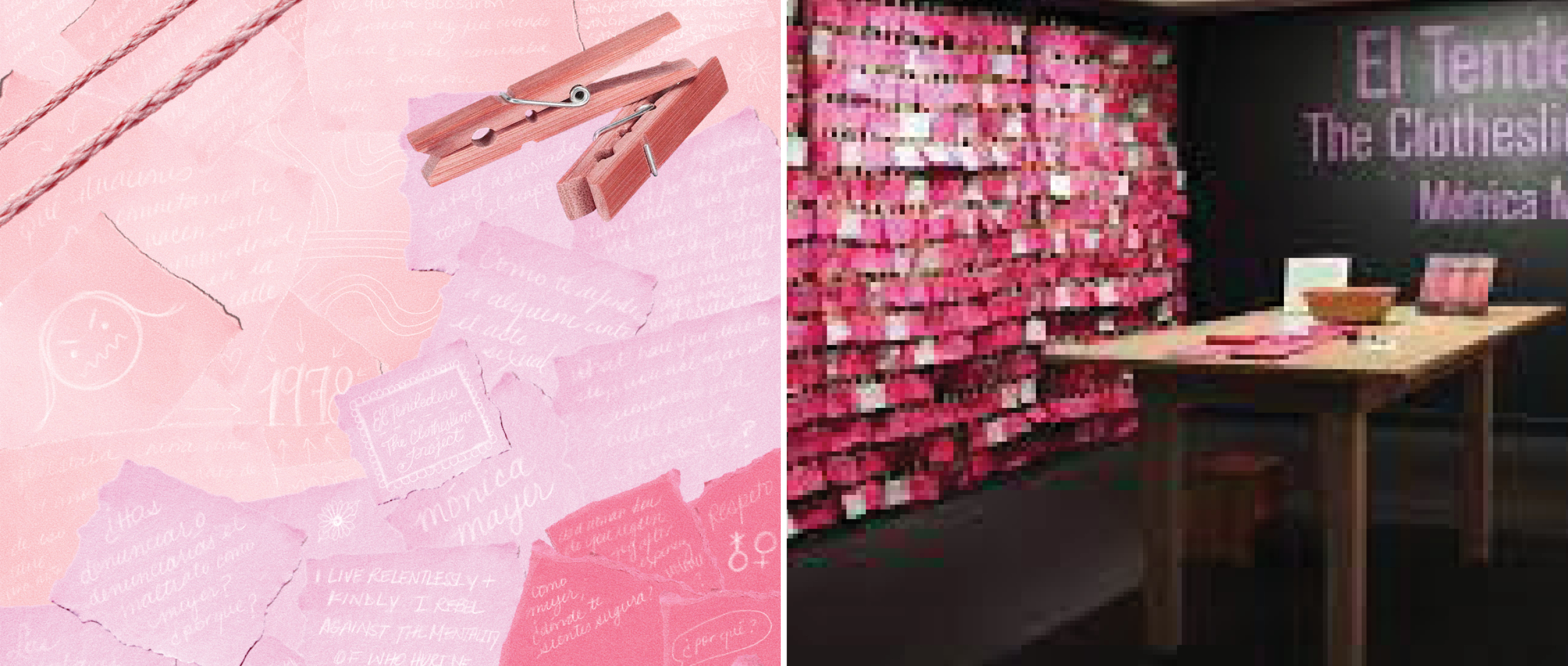

Submitted by: Charlotte M.
"The original piece I am recreating is El Tendedero, or The Clothesline Project, developed by Mexican artist Mónica Mayer in 1978. Born in Mexico City in 1954, Mónica Mayer, who studied at the Escuela Nacional de Artes Plásticas of the Universidad Nacional Autónoma de México between 1972 and 1976, is a feminist pioneer who championed women’s rights in Latin America. El Tendedero is a participatory art installation that invites visitors to leave anonymous comments on pink pieces of paper, responding to questions in either Spanish or English about their experience with sexual abuse and harassment. Once participants answer these questions, their responses are hung by clothespins and placed within a pink frame to demonstrate how gender inequality and sexual violence affect the lives of countless women. While the clothesline and use of pink in diverse elements of her installation are visually striking and help underscore how her artistic project focuses on women’s experiences, a topic often ignored by art institutions, the significance of her pieces resides in the interactions that occur when audience members share their experiences and read the anecdotes and thoughts of others. Through this project, Mayer aims to spark a conversation about the problem of harassment and generate a cultural change, uplifting the voices of those that have been silenced and challenging the patriarchal norms woven into the fabric of our societies. As an homage to Mayer’s activism and survivors of sexual violence, I have created a deconstructed version of the exhibit tying in diverse elements of her work, including its clothespins, twine, the colour pink, as well as the questions posed within the installation and the testimonies brought forth by the participants."
Source: NMWA.org
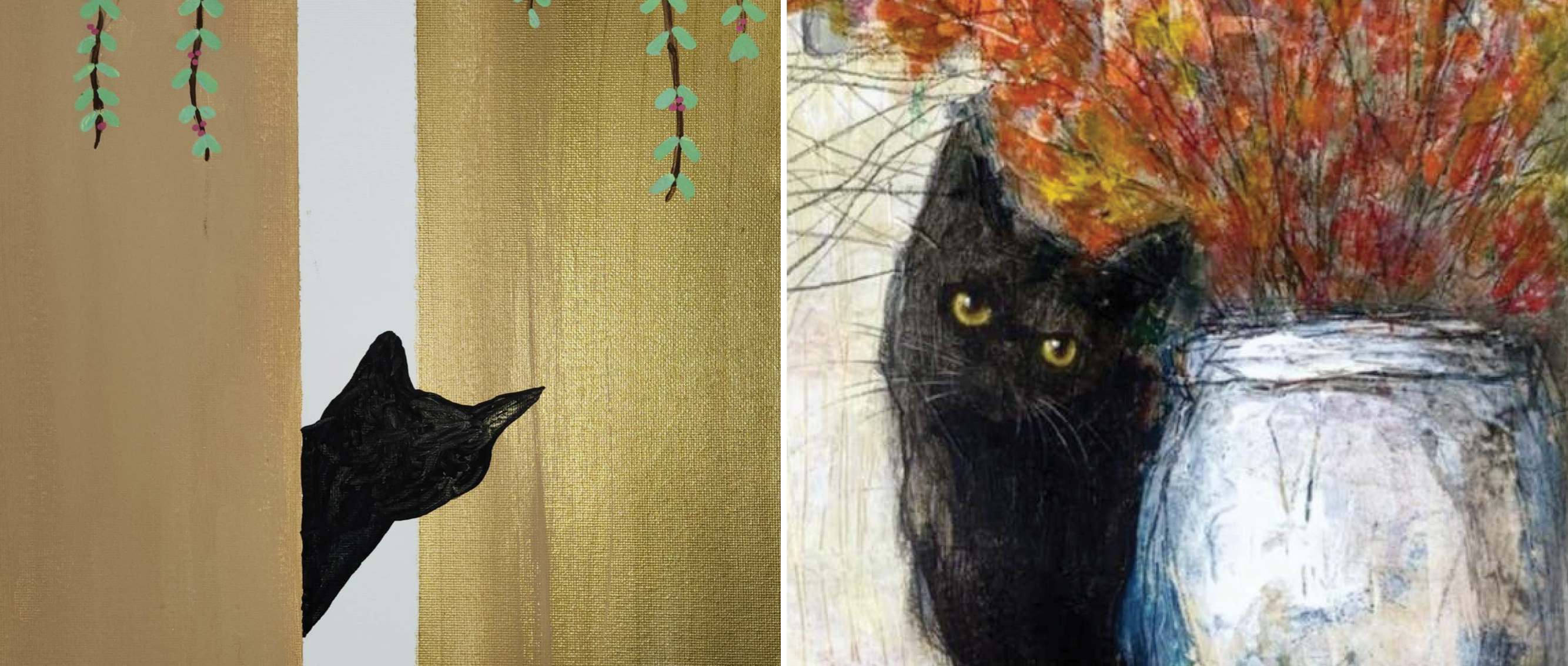

Submitted by: Tessa P.
Source: Artfinder.com


Submitted by: Adam V.
“A dog is depicted walking with his owner, but their movements are made visible on the canvas, as a series of superimposed frames. Giacomo Balla was one of the founders of the Futurist Movement and one of its most important theorists. Futurism, according to the various manifestos signed by Balla, was supposed to represent a real revolution in Italian customs and culture. The whole aesthetic had to refer to the concepts of speed, strength and innovation.”
Source: Frammentirivista.it


